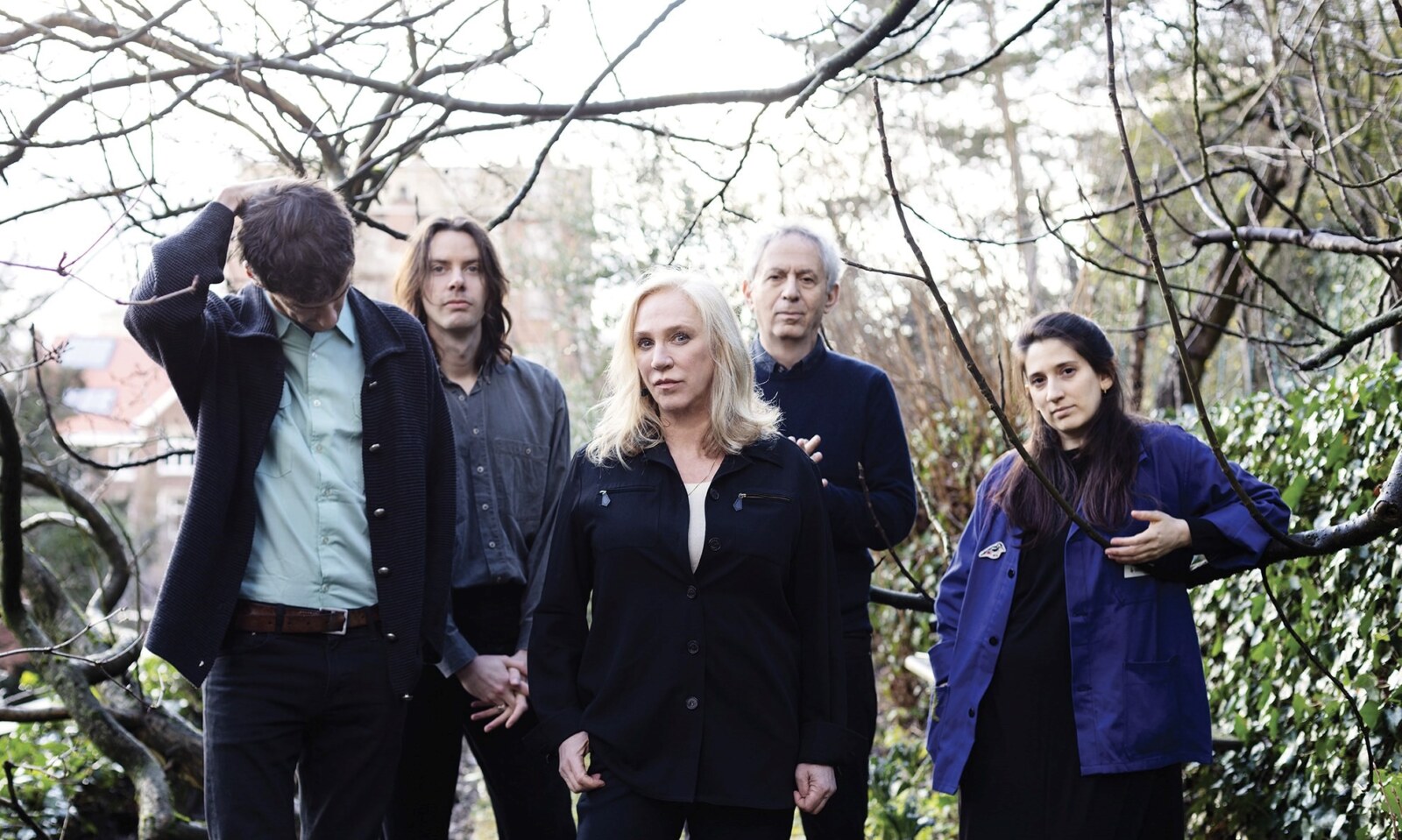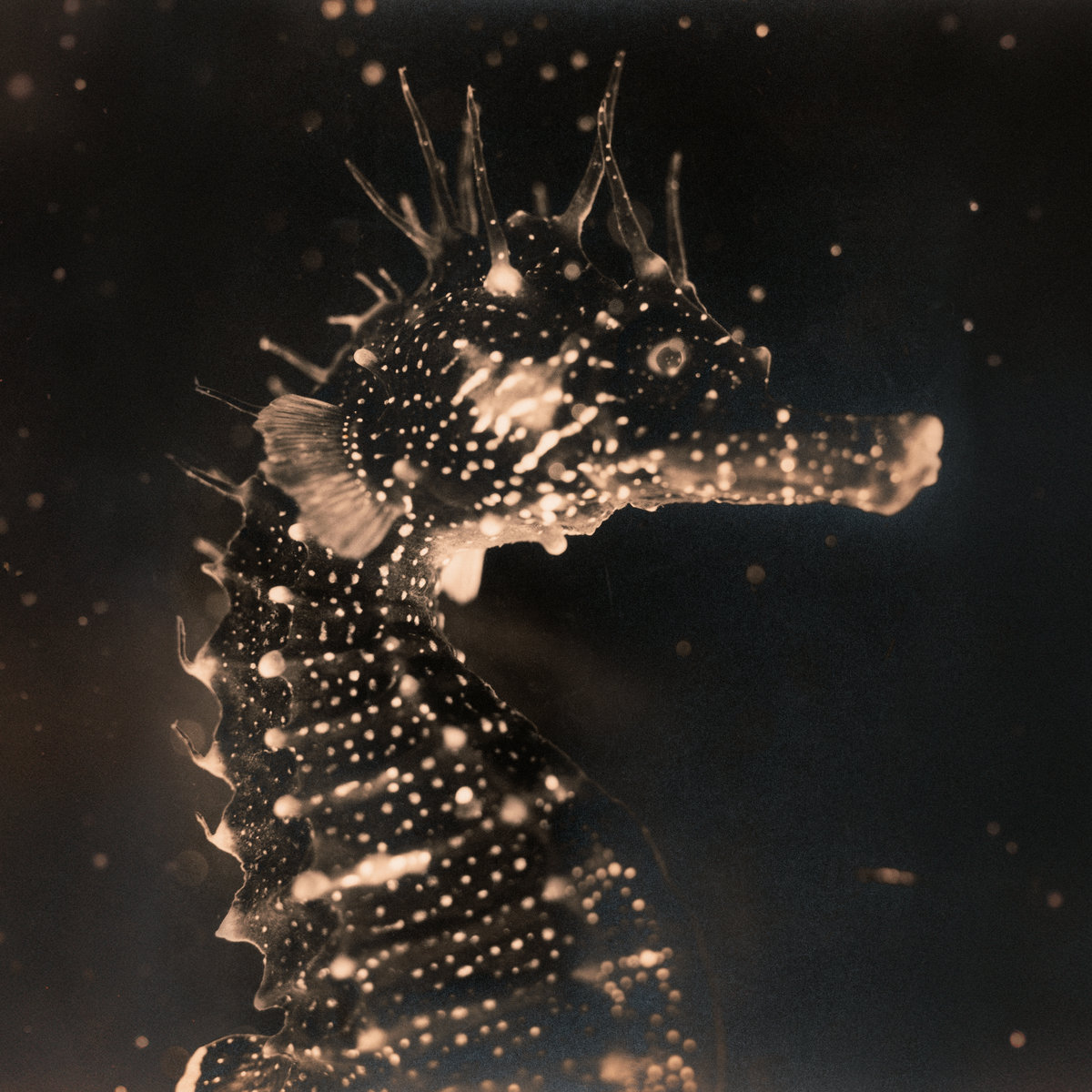Aksak Maboul | Interview | New Album, ‘Figures’
Founded in 1977 by Marc Hollander with Vincent Kenis, this is the seminal Crammed band, which explored several directions later followed by the label (set up by Hollander three years later).
Each of Aksak Maboul’s three albums to date is stylistically different, yet shares a common foundation with the two others. ‘Figures’ by Aksak Maboul (2LP, 2CD, digital) will be released May 22th via Crammed Discs.
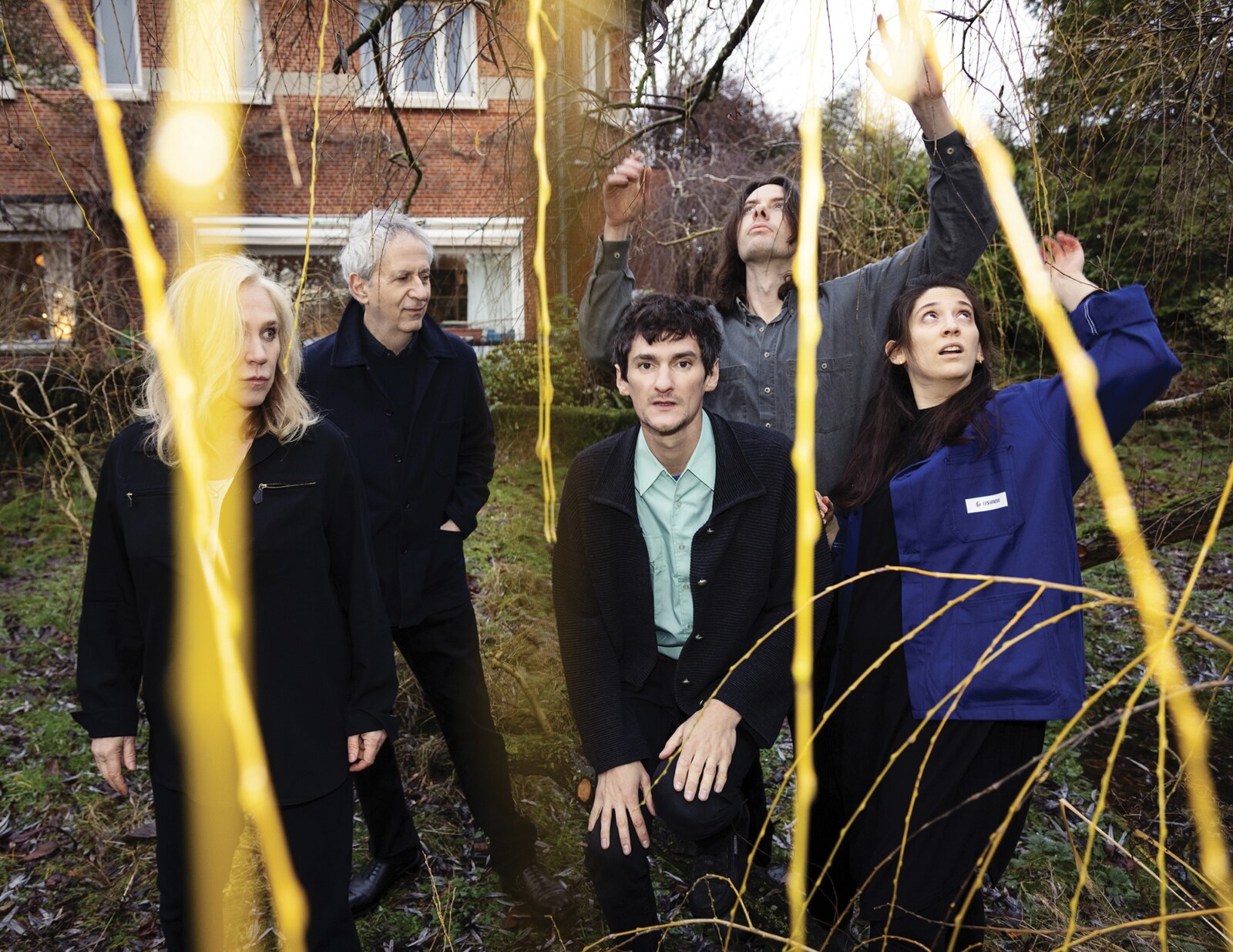
We are very excited about your upcoming Aksak Maboul album. How did you decide to form a new live incarnation of the band?
Marc Hollander: The new band was created in the wake of the release of the record now known as ‘Ex-Futur Album’. As you may know, this was meant to be the third Aksak Maboul album. From 1980 to 1983, in between our tours with the third incarnation of Aksak Maboul (which then morphed into The Honeymoon Killers), vocalist Véronique Vincent and myself had been working on a series of tracks which explored the avant-electronic pop end of the Aksak spectrum. They incorporated quite a few strange elements for conventional pop music, at the time. We weren’t happy with the tracks, and meanwhile the label was starting to take up most of my time, so we left the album in an unfinished state (though it had been announced right from the inception of Crammed Discs, in our very first catalogue, back in 1981!).
“Explored the avant-electronic pop end of the Aksak spectrum”
Thirty years later, in 2014, we started thinking that the time may be right for releasing these unfinished songs. We mixed the tracks that could be mixed (because we had multitrack tapes for them), and retrieved some others from demos, did some editing between versions that were sometimes on cassettes, et cetera. We were planning on doing a kind of archival, low-profile release, but the reactions were enthusiastic, and the ‘Ex-Futur Album’ was extremely well received by the media and the public, and by many young musicians who operate in similar fields.
People asked us if we’d be playing live, and we’d answer: “You must be joking! How could we do that? We haven’t stepped on a stage for decades” et cetera. But we were eventually tempted to try and do a couple of concerts, with backing tapes. We involved three musicians (who weren’t even born when these songs were written and recorded), including our daughter Faustine, and two members of Belgian band Amatorski. After a few rehearsals, we found ourselves with a real band, playing funkier, more adventurous versions of the songs…and ended up playing several dozen shows around Europe, between 2015 and 2017.
The line-up gradually changed, the two musicians from Amatorski (Sebastiaan Van den Branden and Christophe Claeys) were replaced by guitarist Lucien Fraipont and drummer Erik Heestermans. Most of the material in the set consisted of expanded, re-arranged versions of the songs on ‘Ex-Futur Album’. So there are pop elements, with various improvs and dubby/psychedelic/electronic/afrobeat/minimal music/jazz digressions.
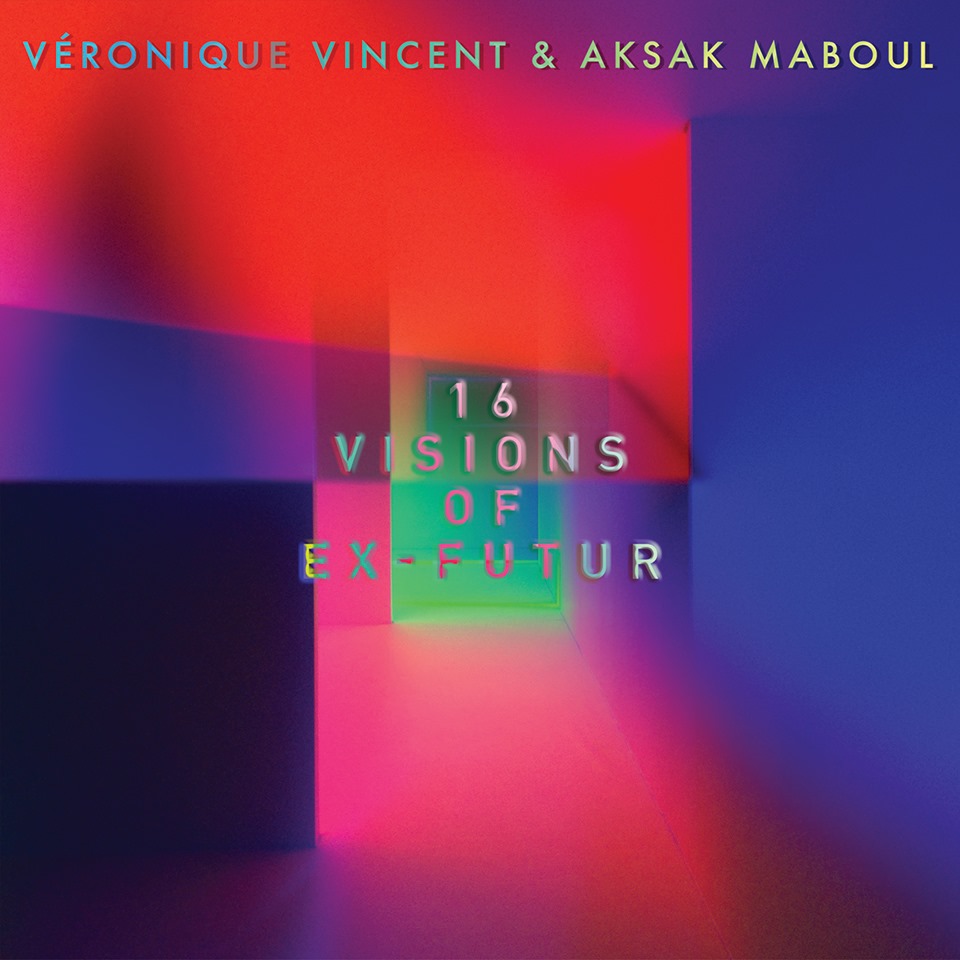
We then gave the ‘Ex-Futur Album’ a new lease of life by asking various artists to record either covers versions or remixes of the songs: the likes of Laetitia Sadier, Lena Willikens, Hello Skinny, Aquaserge, Jaakko Eino Kalevi, Flavien Berger, Forever Pavot, Burnt Friedmann and several others turned out to be fans of the record, and gave us their own interpretations, which we put out on an album entitled ’16 Visions of Ex-Futur’ (2016). To extend the fun even further, we invited four of these artists to join us for an extravagant, 2:30 hours show, which was dubbed the Aksak Maboul Revue. It featured our 5-piece line-up augmented by Julien Gasc and Benjamin Glibert from fantastic French band Aquaserge, and Laetitia Sadier and Jaakko Eino Kalevi also joined in, each playing short sets of their own material, backed by assorted Aksak and Aquaserge members. We played five shows like that (in London, Paris, Brussels, Frankfurt and Cologne), and it was an exciting moment.
Together with Véronique Vincent you decided to write and produce the fourth album with this current lineup of musicians. You also featured many guests such as Fred Frith, Steven Brown (Tuxedomoon), members of Aquaserge, et cetera. What was the writing and arranging process like?
As the touring progressed, we started writing a couple of new pieces, which we rehearsed and then performed on our late 2016 and 2017 shows. We then took time to work on writing new material in a more concentrated way, between Summer 2017 to Summer 2018. I learned to use a recording/composing software (I had never used one before), and enjoyed working a lot like that, it goes well with my tendency to do collages, to take advantage of accidents and build on them. I used bits of improvisation, piano ramblings (recorded with my phone), field recordings et cetera, which I integrated in the compositions. I also like to use melodic or harmonic fragments which remind me of bits in old records that I like, a bunch of tiny, hidden tributes, in a way. So the writing process was a mix of straightforward “writing,” of extracting melodic/harmonic elements from instrumental improvisations, and of using the software to create sounds, events and odd structures.
Meanwhile, Véronique was writing texts, using similar processes, culling phrases and words here and there to compose her impressive, mysterious texts. Her writing was nourished by her close relationship with the work of various poets, writers and painters, as well as by her own work as a painter. By the way, there’s an excellent translation/adaptation of the lyrics in the LP booklet, done by Anna Knight, a translator from New Zealand.
About one third of the songs started from the lyrics, around which the music was written, while the other two-thirds started from the music, with very defined melodies, to which Véronique wrote the words.
There are also long instrumental segments, as well as a series of interludes, which were a lot of fun to create. Some of them use bits of the “main” pieces on the album, some use spoken vocal fragments, recent or old.
I used a variety of keyboards, drum machines, hand percussion, even played some guitar and bass, and dug out my bass clarinet and alto sax, which was a lot of fun. And Véronique used her instrument, i.e. her inimitable voice…
When Véronique and I had finished writing/recording the basic compositions, we involved the other band members, Faustine, Lucien and Erik, who overdubbed guitar, bass, drums, sometimes arranging their own parts.
We then added the guests: Steven Brown came to record the vocal duet (written by Véronique – it’s almost like a mini-theatrical play describing a conflictual, ambiguous scene between two characters). Fred Frith played guitar and viola on 7 songs, Benjamin Glibert from Aquaserge played guitar (including a wild duet with Fred), Martin Méreau did some drum and vibraphone overdubs, Jordi Grognard played flute and clarinets, and former Honeymoon Killers drummer Jean-François Jones Jacob III played the tablas on one song. Most of the recordings were done in our home studio, except drum recordings and certain sessions with guests. The vocals were recorded at the end, including the Véronique/Julien Gasc (Aquaserge) duet on ‘Fatrasie Pulvérisée,’ a song they co-wrote. Backing vocals by Faustine, Benjamin, Audrey from Aquaserge were also logically recorded towards the end of the process. So were many of the interludes.
The mixing was done by Greg Bauchau, based on fairly precise pre-mixes I handed over to him (as, in most pieces, the effects and the fader movements are actually part of the compositions).
“My intention was to weave together the various strands of music”
What is the concept behind ‘Figures’?
There was no pre-established concept. The album developed in a very organic way, with a great interaction between the music and the lyrics. My intention was to weave together the various strands of music I enjoy playing with, and to create an album in which elements from the previous three records would be subsumed, and turned into something else. I’m quite happy with the result.
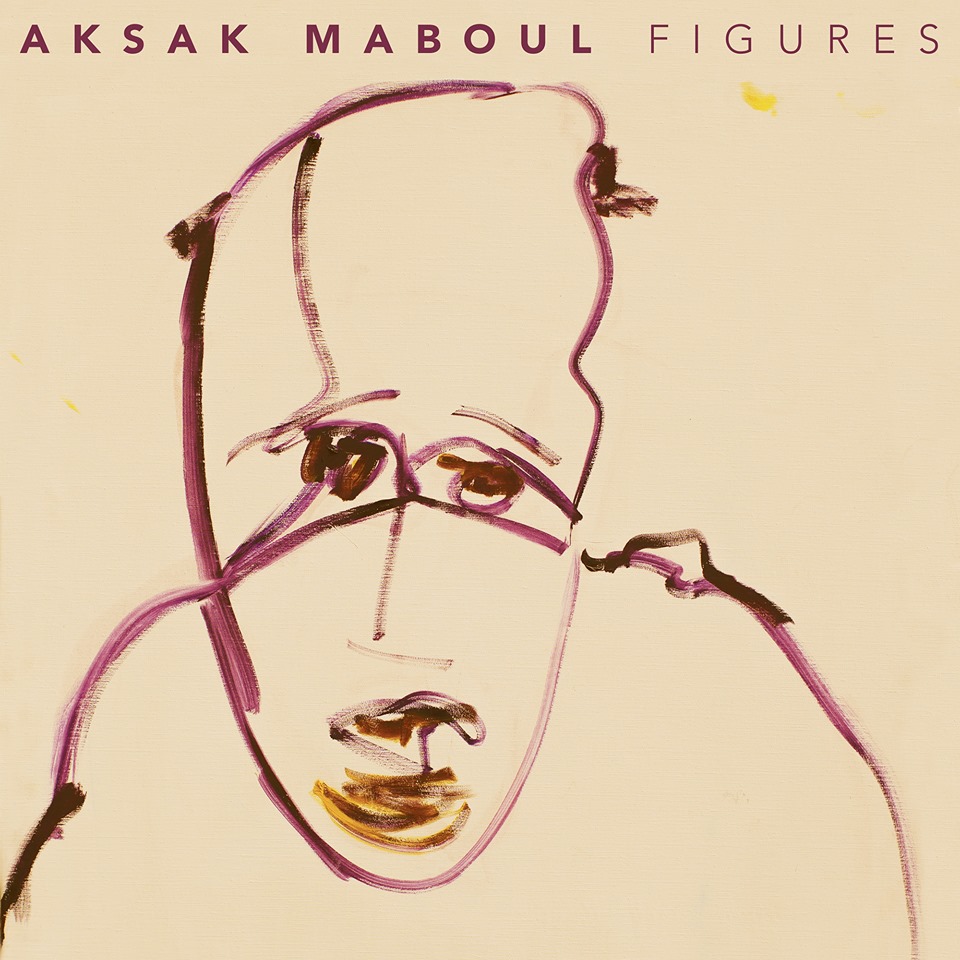
As for the album title, it emerged from Véronique’s lyrics, in which a collection of characters, situations, relationships et cetera can be found. They’re also reflected in the drawing and paintings she’s done for this project , which illustrate the cover and booklet. ‘Figures’ means many things: the word can refer to people, to geometrical forms, to stylistic devices in literature…
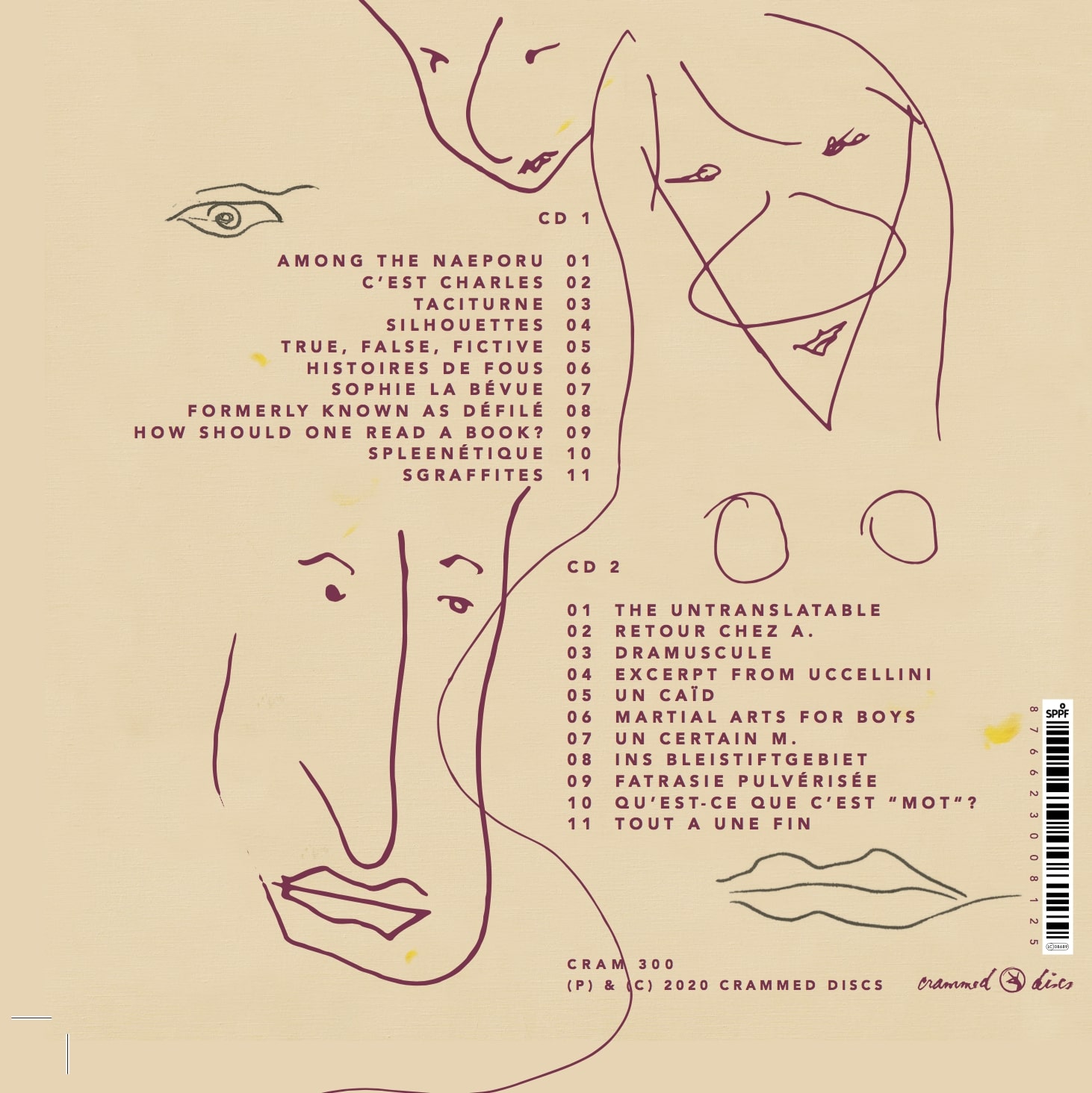
It’s a new chapter in the Aksak Maboul story. How would you compare it to your previous releases?
As mentioned I feel that this new chapter sums up some (not all) of the elements I liked in the previous releases, and creates a new context for using them, while opening new directions for future releases.
If we look back at the various “chapters” in the Aksak story (a story which includes a long gap, during which I and Hanna Gorjaczkowska— who has run Crammed with me practically since the label’s early days— have put about over 350 albums by other artists!), we notice that the music and the band have kept shape shifting. The three previous albums (‘Onze danses pour combattre la migraine,’ ‘Un Peu de l’Âme des Bandits’ and ‘Ex-Futur Album’) are quite different from each other, in terms of sound, instrumentation, they’re almost in different musical genres… But, for me, they’re like successive reconfigurations of diverse elements I’m fond of, and there seems to be a common thread running through them, maybe also a common style (no matter what genre we’re delving into), and certainly also a deliberate set of references, of musical vocabulary which appear in various parts of these records. It’s interesting to note that, in the early days, some people related a lot more to ‘Onze danses pour combattre la migraine’ (and thought that ‘Un Peu de l’Âme des Bandits’ was too busy and complicated), while some others way preferred ‘Un Peu de l’Âme des Bandits’ (and thought that ‘Onze danses pour combattre la migraine’ was lightweight)… But this has pretty much changed with younger generations of fans, who have no problem relating to the entire body of work (including ‘Ex-Futur Album’), and enjoy all the variations of the Aksak Maboul sound.
‘Figures’ will be preceded by the release of a 7” EP entitled ‘Charles F. Bleisftift,’ containing variations on four of the album’s tracks.
This 7″ vinyl will come out on June 20 for Record Store Day in various EU countries, and will also be available on Bandcamp. It contains the following tracks (which won’t appear on the album in that shape):
A1 ‘Tout a une fin’ (short), which condenses the epic, 8:35 closing piece of the album into a tight 3-minute track.
A2 ‘Blaue Bleistift,’ deriving from an interlude off the album, expanded here into a full track.
B1 ‘C’est Charles’ (edit), the single version of a song from Figures.
B2 ‘Silent Silhouette,’ an almost-instrumental piece with (what I imagine to be) an almost-Felliniesque atmosphere.
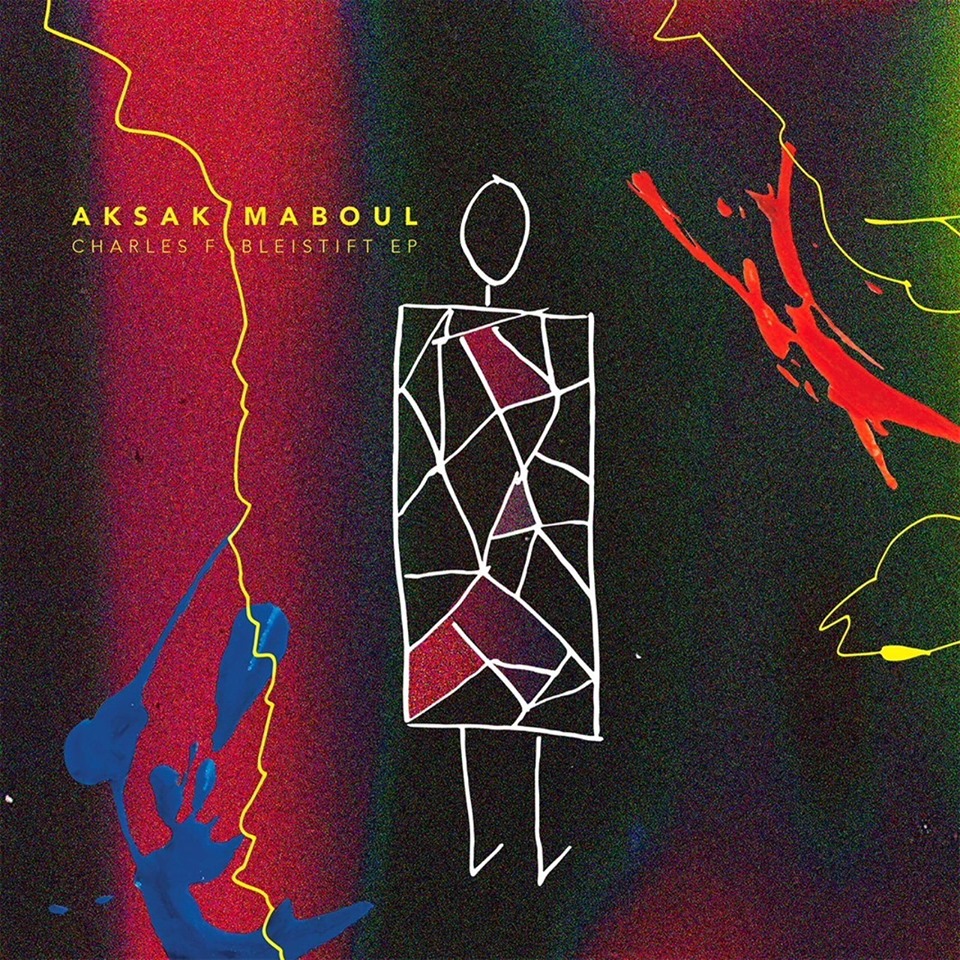
By the way, we also have another new track out: it’s a reconstruction by Aksak Maboul of a track off the lovely ‘Mountains and Plains’ album by UK composer/producer Stubbleman (aka Pascal Gabriel).
It’s practically a new composition, with lots of keyboards and textures, and poetry written and spoken by Véronique Vincent. I’m quite excited by these tracks (and by ‘Blaue Bleistift’), maybe because – though they’re coming out before the album – they’re the latest ones we recorded…
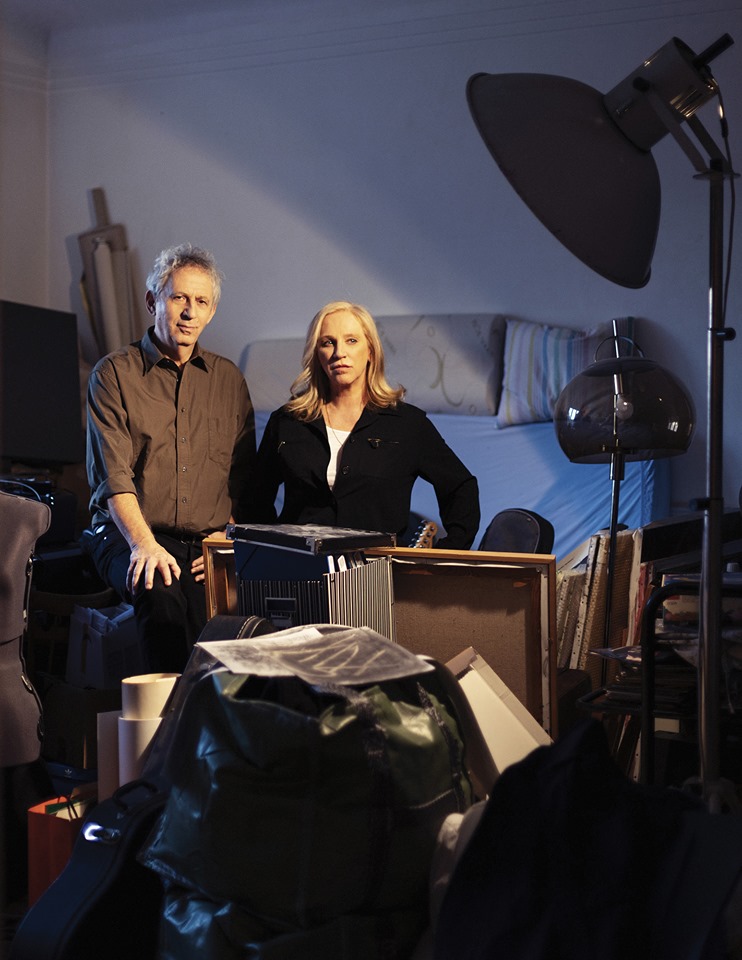
A lot of our readers would love it if we can discuss how it all started for you. To begin with, when and where were you born and was music a big part of life in the Hollander household?
I was born in Geneva (CH) in 1950, and grew up in Brussels, Belgium. Yes, music was quite present at my parents’, they listened to classical music, jazz, French and international pop et cetera. I remember listening to some of their records: an Elvis 7″, Chubby Checker, Ella Fitzgerald, Debussy…
At what age did you begin playing music and what were the first instruments that you played?
I started playing the piano around age 10. After a few classical lessons, I started improvising, trying to play blues and more abstract stuff. Also played some blues harmonica at around age 16. My first electric keyboard was a Hohner Pianet, and I got a Farfisa organ back in…1969! I still own it and have been using it on the new album.
What were your first musical involvements?
When I was a student, I formed a band with a guitarist friend (Paolo Radoni, who went on to become a jazz guitarist). The band was called Here and Now, it involved quite a few musicians (between 5 and 9, depending on the shows), and we played a wild mixture of rock and free jazz. We entered a contest for bands, and won, as our outrageous performance blew the minds of the jury, which included a.o. Marc Moulin (Telex), and a French journalist-cum-manager who then got us to sign a record deal with then-famous French label BYG. This was in 1969. We performed for a few months, the recording with BYG never materialized, and we stopped after a while.
The band included a.o. cellist Denis Van Hecke (who would later join the 2nd incarnation of Aksak Maboul), and a musician known as Somore Sainte-Jules, who later co-founded Marseille underground band Barricades (with Hector Zazou et al). Vincent Kenis also joined the band for the last few shows. I have some home & live recordings from that period, which we’ll probably release at some point.
What can you tell us about involvement with the band called Cos which released a few albums?
Cos basically hired me to be their keyboard player. I toured with them for a couple of years. Playing over 60 shows with them was a formative experience. It wasn’t my music though. In 1976, I took part in the recording of their album Viva Boma, at Katy Studio near Brussels (i.e. the studio in which Marvin Gaye later recorded ‘Sexual Healing’!). The album included a couple of sections that I co-wrote, which later developed into pieces for Aksak Maboul. That album was produced by Marc Moulin. A few weeks after the recording, he offered me to record an album of my compositions for the label he was projecting, Kamikaze. So, in that way, my involvement with Cos had a momentous consequence.
Can you elaborate on the formation of Aksak Maboul?
So the starting point of Aksak Maboul is this album, ‘Onze danses pour combattre la migraine,’ which was the consequence of Marc Moulin’s invitation. I started on my own, and put together all the musical ideas and fantasies I had accumulated over the past few years (a process quite similar to what I recently did with ‘Figures,’ actually). After recording several tracks at (Telex’s) Dan Lacksman’s studio, I gradually involved my friend Vincent Kenis. We wanted to be free to experiment and to do things at our own pace, so we borrowed an 8-track tape machine and continued the recordings elsewhere, in a collective rehearsal /recording studio called Villa Hortense. Vincent engineered some of these recordings, and gradually got involved in playing on and co-writing some of the tracks. We also had some guests on some tracks, such as Chris Joris (percussion, keyboards), Ilona Chale, Lucy Grauman and Catherine Jauniaux (vocals). These were all friends, people I knew and sometimes played with.
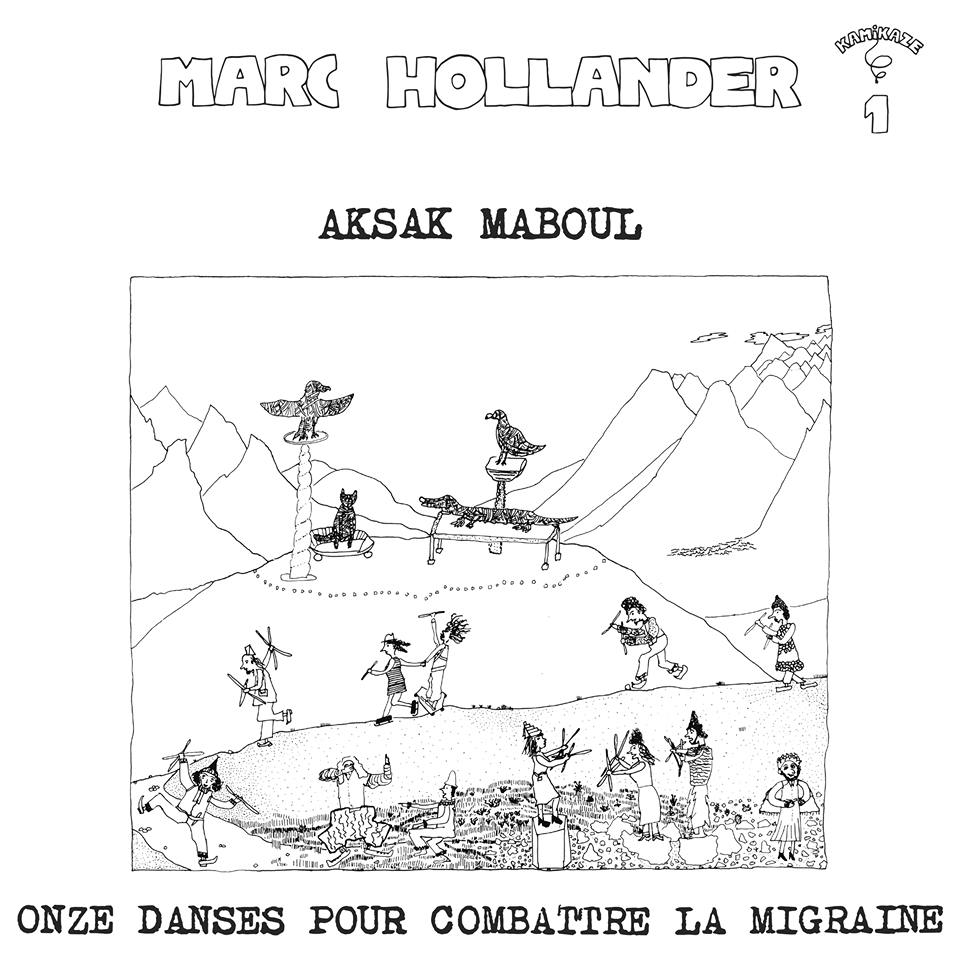
So the album was recorded over a period of 4 or 5 months, partly at Lacksman’s studio, mostly at Villa Hortense, and was therefore mostly produced by Vincent Kenis and myself, with contributions by Marc Moulin (who oversaw the initial sessions as well as the mixdown).
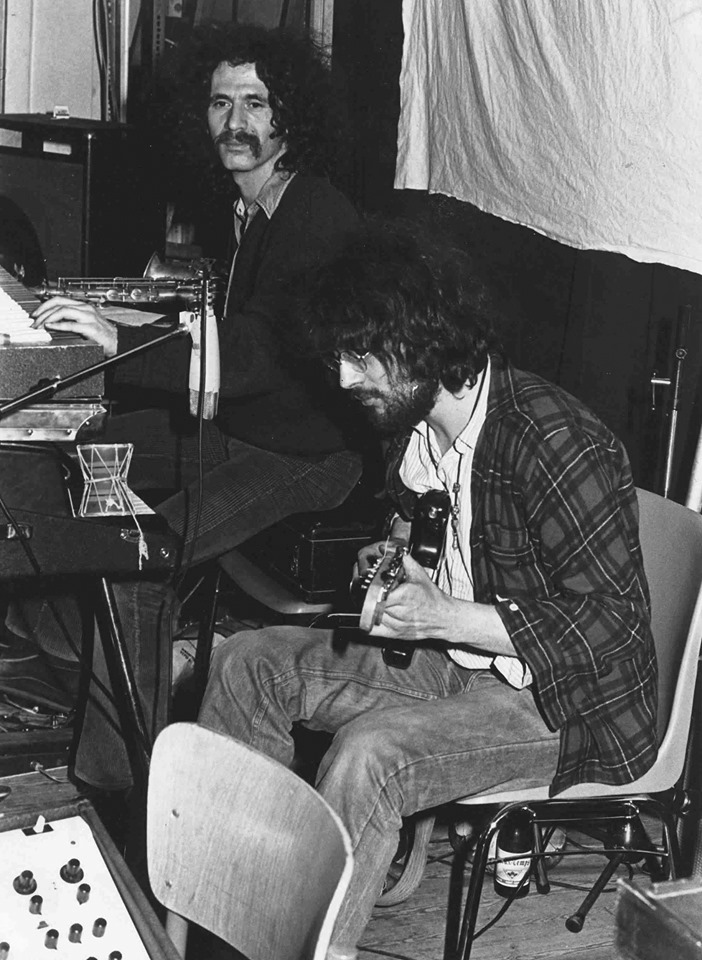
When the album was finished, Vincent and I decided to form a band to perform the album live. We called it Aksak Maboul (hence the dual artist name on the album, which was commissioned by Moulin to be a Marc Hollander album, and became a band of sorts during the process). We started performing as a 4-piece: Chris Joris, Vincent Kenis, Marc Moulin (who didn’t appear on the album but agreed to do some shows with us) and myself. Moulin turned out to be too busy, and was soon replaced by Frank Wuyts. After a first run of concerts, in early 1978, we added cellist Denis Van Hecke and bassoonist Michel Berckmans to the line up, and later also Geoff Leigh on sax and flute.
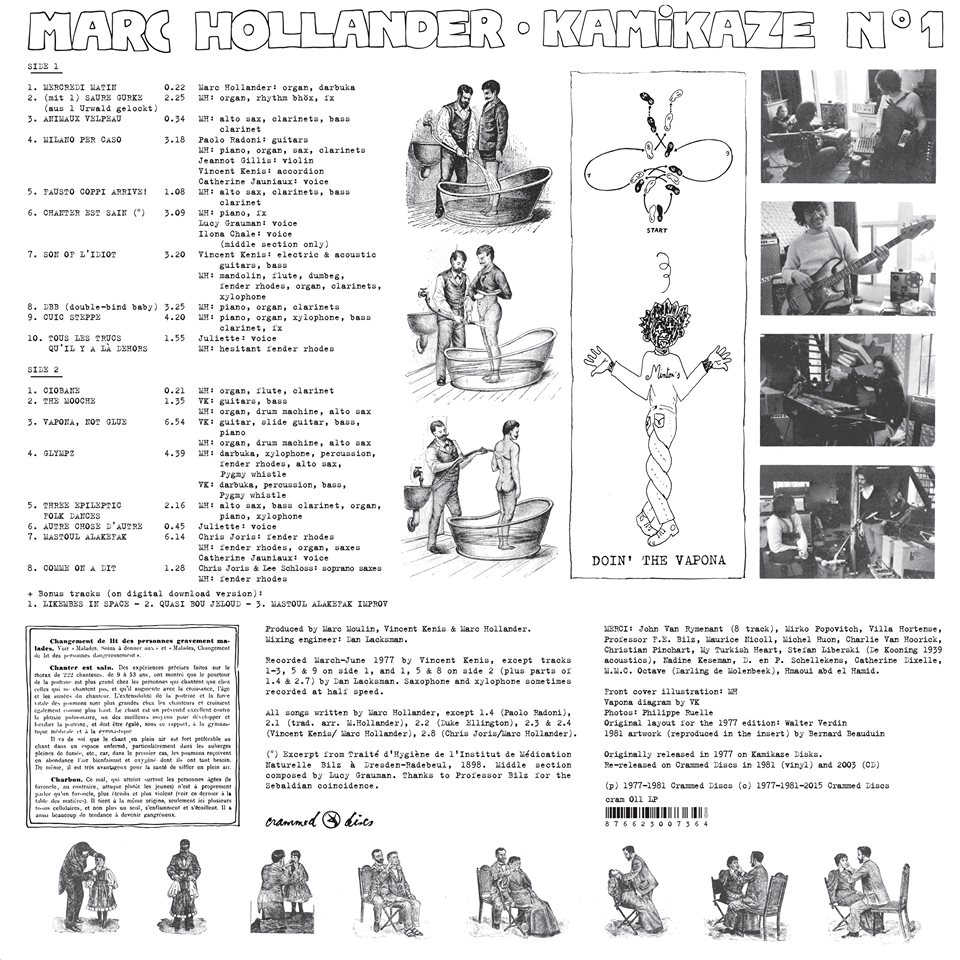
What were the influences and inspirations for the songs recorded?
The inspiration is very diverse, I drew from many styles of music I had enjoyed listening to, including “krautrock,” so-called Canterbury pop, jazz, African and Balkan music, minimal/systems music, 20th century classical et cetera. To explain the process, I’ll quote part of the notes for the 2015 vinyl reissue of the album (which contains extensive notes about each track).
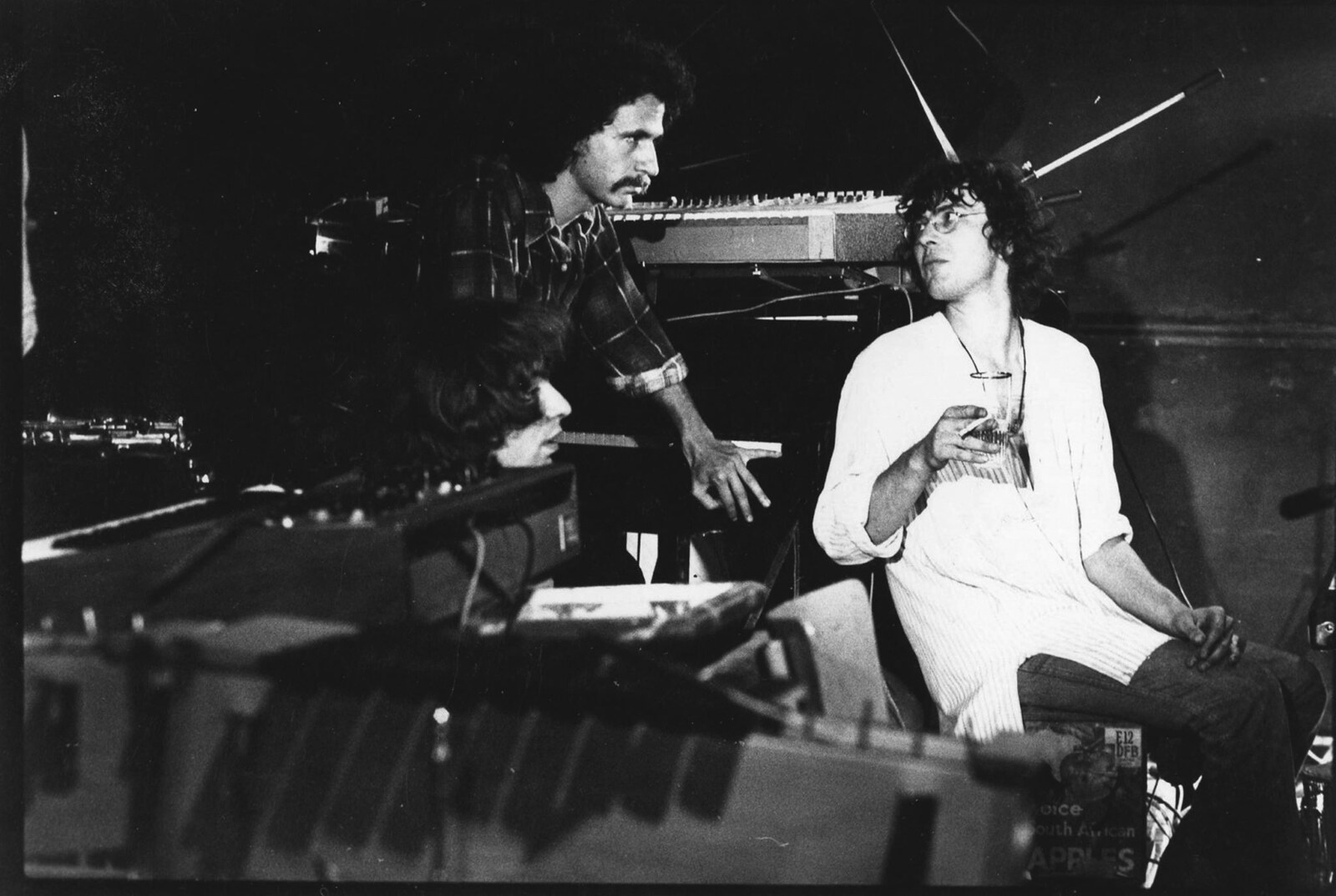
“Being a self-taught musician, I had always been listening to a wide variety of music. While working on this album, I played around with different genres. I soon noticed that, whenever I tried to create an impression of a certain style of music, my technical limitations and my only-partial understanding of whatever it was that I was trying to emulate gave an interesting, personal twist to the result. Which goes to show that sometimes there’s virtue in failure.”
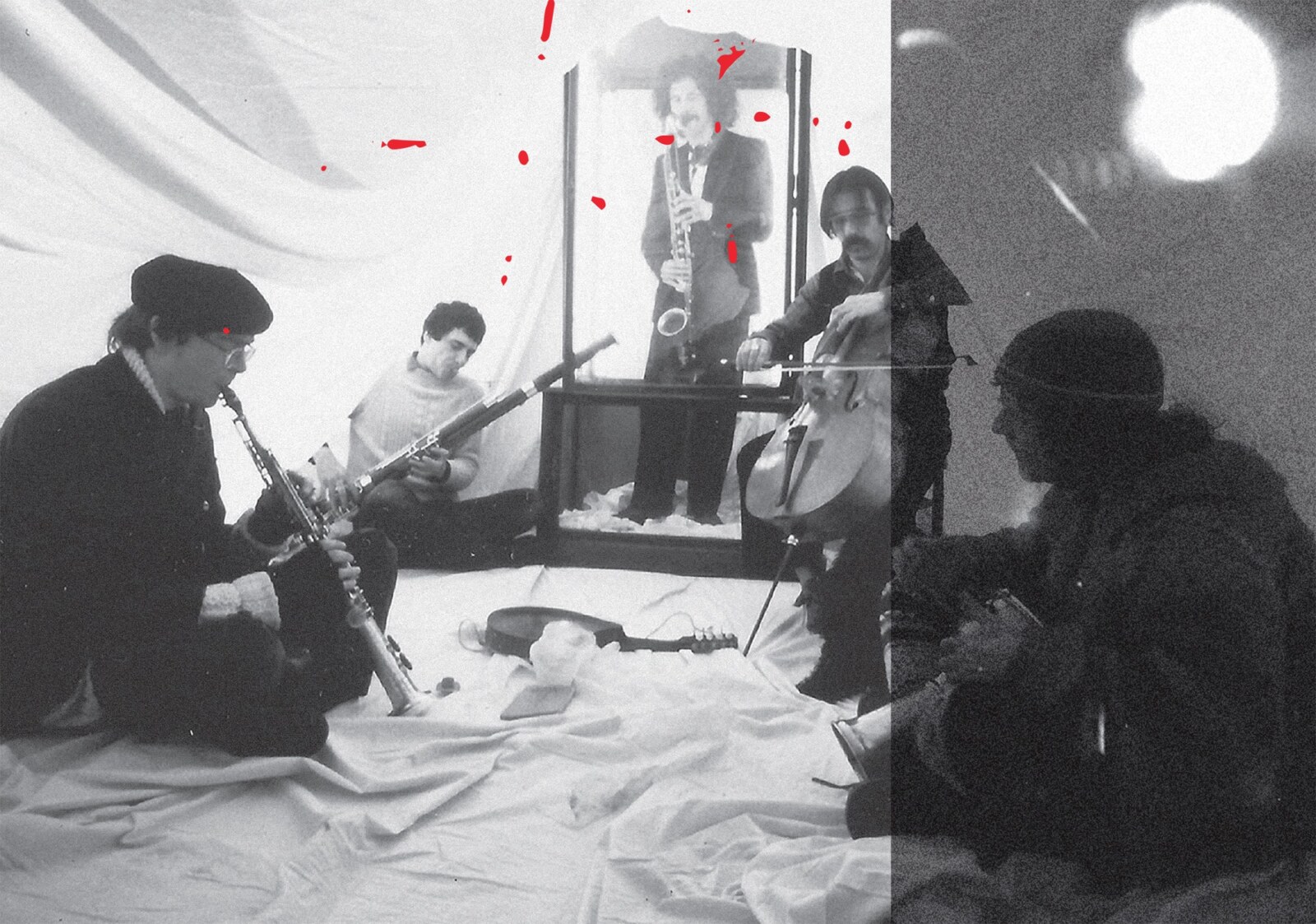
One of the most prominent “Rock In Opposition” records is your second album ‘Un Peu de l’Âme des Bandits’. It was released in 1980 on Crammed Discs, a new independent record label you founded. The album was recorded in Sunrise Studio in Switzerland. You invited Chris Cutler and Fred Frith from Henry Cow. How was it to collaborate with them and what were some of the strongest memories from recording your second album?
So, picking up the story where we left it above, the second chapter of the Aksak Maboul story began when we expanded the line-up in early 1978. The music gradually became wilder, more complex, with extended sections of improv. We wrote some new pieces (mostly between Frank Wuyts and me), and did a first recording of the long compositions called ‘Cinema’ (which takes up the second side of the ‘Un Peu de l’Âme des Bandits’ album) for a radio program, in June 1978. A section of that recording appears in the bonus disc included in the vinyl reissue of ‘Un Peu de l’Âme des Bandits,’ and it’s really interesting (for fans…) to compare that version and the one recorded 8 months later with Frith and Cutler. It’s at once quite similar and different…and gives a more precise perspective on what Frith and Cutler’s input was (and what was already there, in terms of composition et cetera).
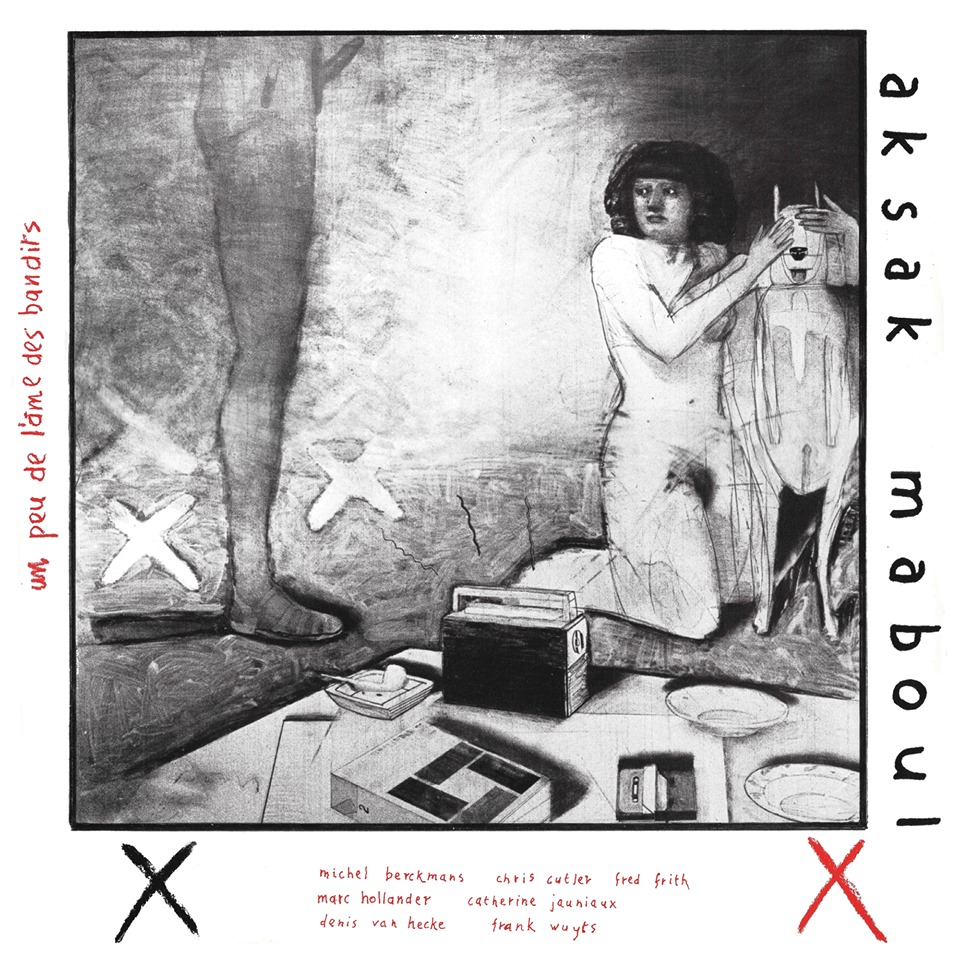
I got acquainted with Chris Cutler and Fred Frith after I gave them a copy of ‘Onze danses pour combattre la migraine,’ at a Univers Zero/Henry Cow concert in Brussels (at which I filled in for UZ’s keyboard player). Chris loved the album and included it in his Recommended Records catalogue. We stayed in touch, and I met them again when I recorded with Geoff Leigh’s band Red Balune, at Sunrise Studio, sometime in late 1978.
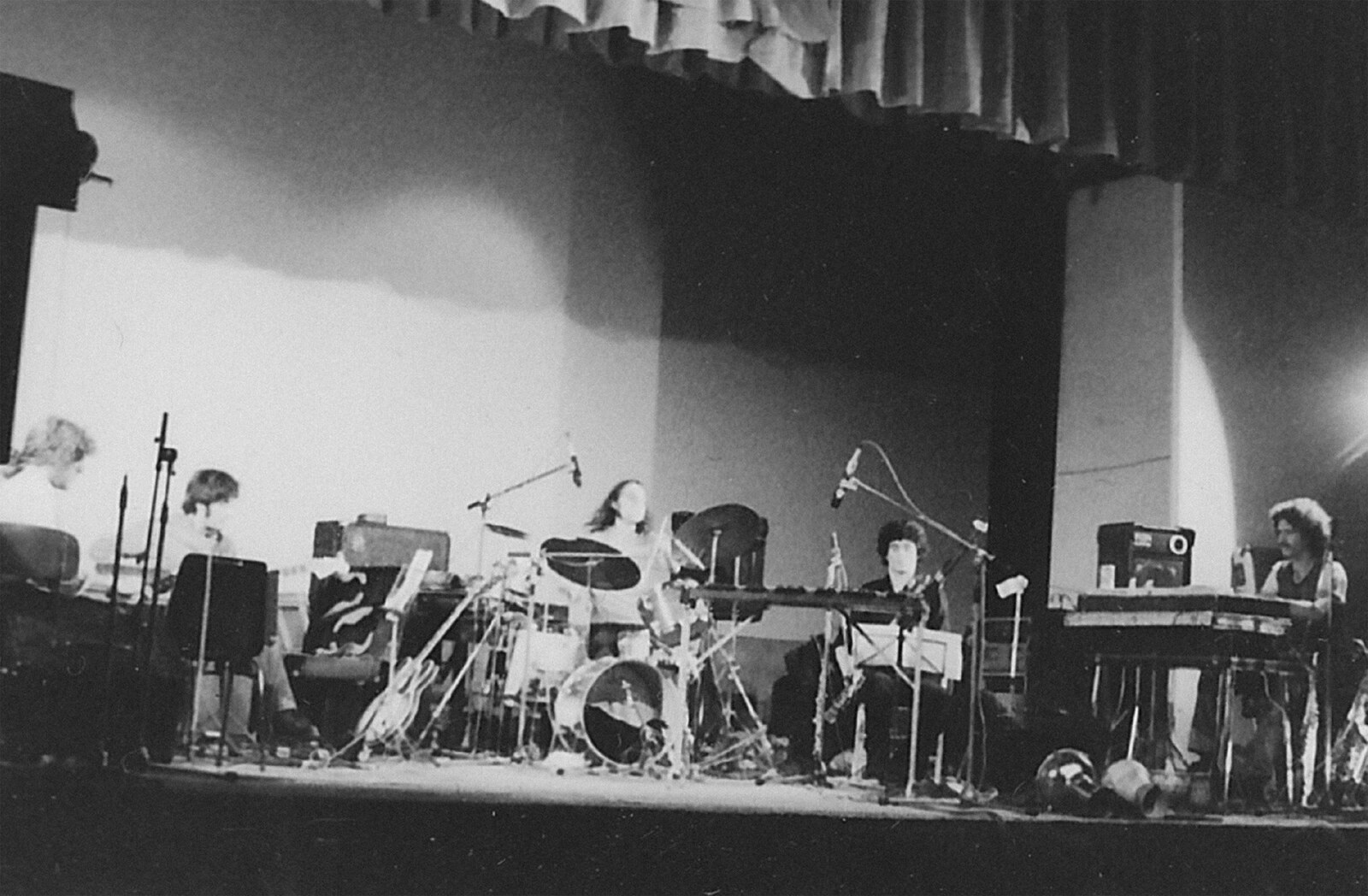
Vincent Kenis had left the band, I was planning to record the 2nd album and needed someone to play the guitar and bass. A drummer would’ve been great too…so I asked Fred and Chris to take part in that recording, They accepted, I was exhilarated (being an admirer of their bands Henry Cow and Art Bears).
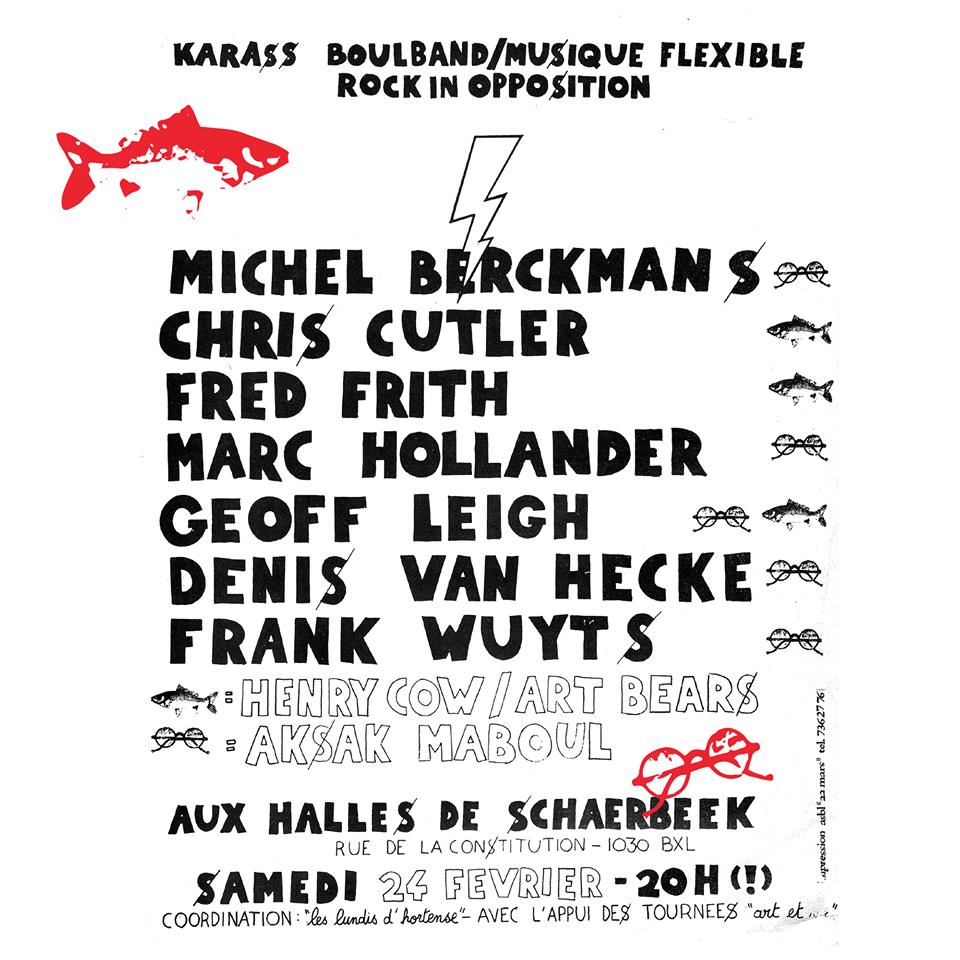
So I sent recordings and music sheets to Chris and Fred, they learned the pieces, and came to Brussels to rehearse with us. At that point, the album was meant to consist of ‘Tango’ (aka ‘Palmiers en Pots’), ‘Truc Turc’ (aka ‘Viaggi Formano La Gioventú’) and ‘Knokke’ (aka ‘Cinema’), three pieces which had been part of our repertoire for over a year. Plus two songs which were written during the rehearsals, respectively by Frith (‘Rondo,’ aka ‘Geistige Nacht’) and by Wuyts and Van Hecke (‘Pogo’ aka ‘Inoculating Rabies’).
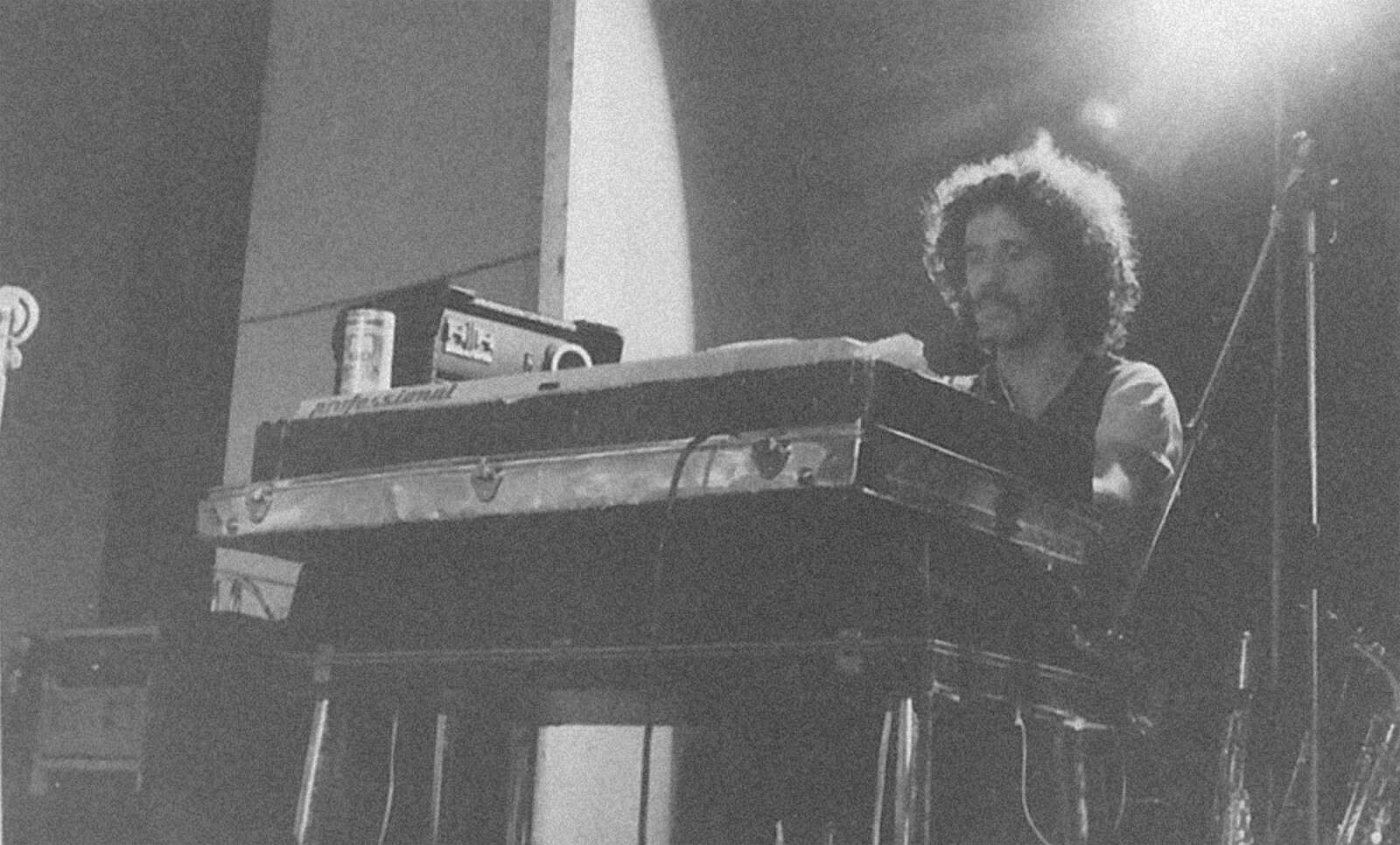
Right after the rehearsals, we played two shows in Belgium, and drove to Switzerland to record most of the album at Sunrise Studio in Kirchberg (where Art Bears and Henry Cow had recorded their latest albums). Catherine Jauniaux, a close friend of ours, joined us for the recording, which turned out to be the start of her career as a distinguished improv vocalist.
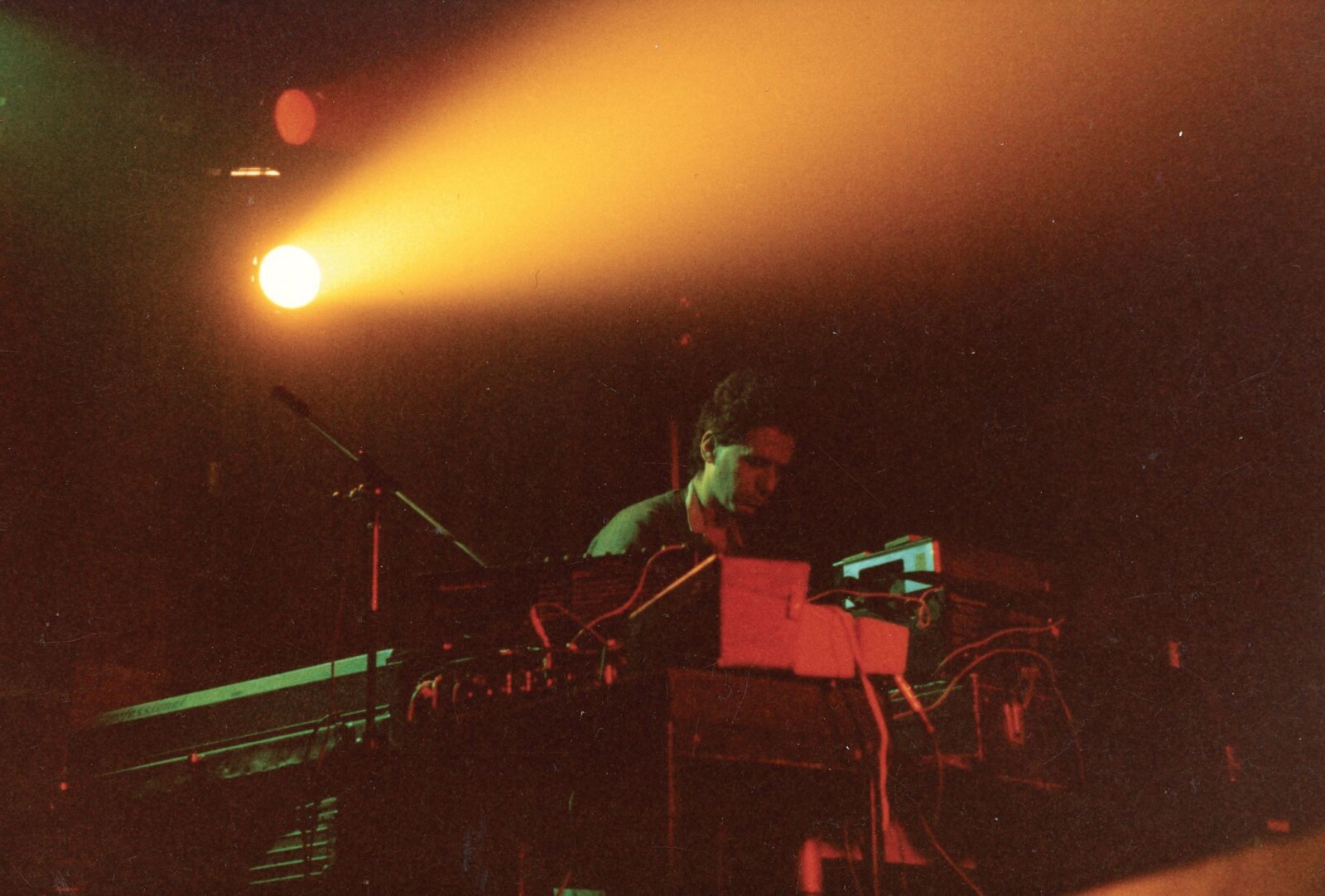
The recording sessions were inspired and intense. Right after that Frith and Cutler asked me to play keys and woodwind with Art Bears, for their first and only tour. We rehearsed in London, in This Heat’s studio, and went on the road for about six weeks. Both Art Bears (consisting of Frith, Cutler, Dagmar Krause, plus Peter Blegvad and me) and Aksak Maboul played at the RIO festival in Milano. The mixing of ‘Un Peu de l’Âme des Bandits’ took place in August 79, again at Sunrise Studio in Kirchberg.
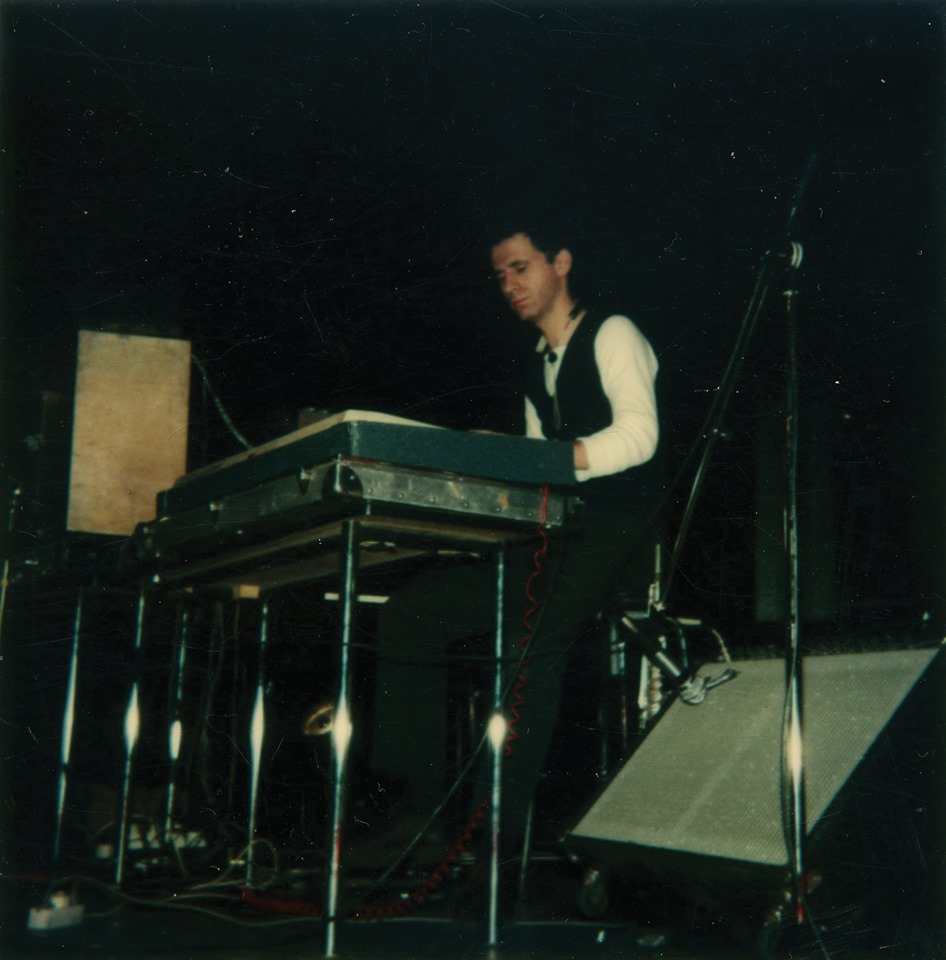
Meanwhile, after listening to the recordings, I felt that something was missing, and wrote the track ‘A Modern Lesson,’ as a way to summarize the album (the track includes samples from all the other tracks on the album), and also probably to start looking for a new direction. I was also pleased to use a combination of drum machine and live drums, something I often find quite exciting (and which is very present in our new album ‘Figures,’ where it’s sometimes hard to distinguish between the programmed and the live drums). ‘A Modern Lesson’ was recorded at that point, just before the mix. I stayed on after the mix was over, at Fred Frith’s invitation: he was doing final recording sessions for his ‘Gravity’ album, and asked me to play on several songs. I returned again to Kirchberg in January 1980 for the Gravity mix and final overdubs.
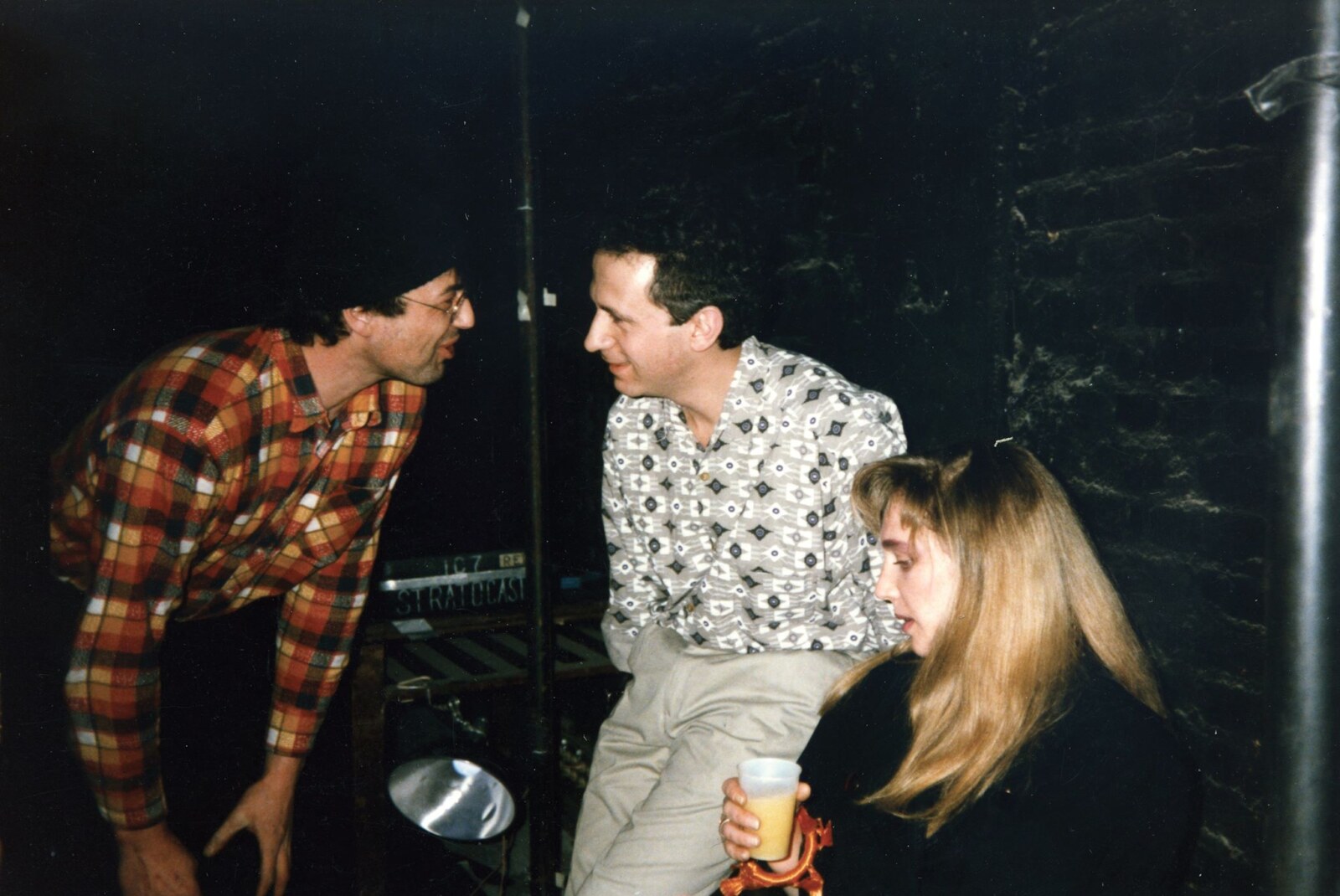
What can you tell us about Aksak Maboul artwork?
It’s as diverse as the music…The ‘Onze danses pour combattre la migraine’ art is a mix of drawings made by Vincent Kenis (on the back) and myself (the front cover), with some old etchings found in a late 19th century medical book. Incidentally, it was a bit of a shock to find two of these images on a page of W.G. Sebald’s book Vertigo… Very odd that he and I picked the exact same images from a 500-page book…
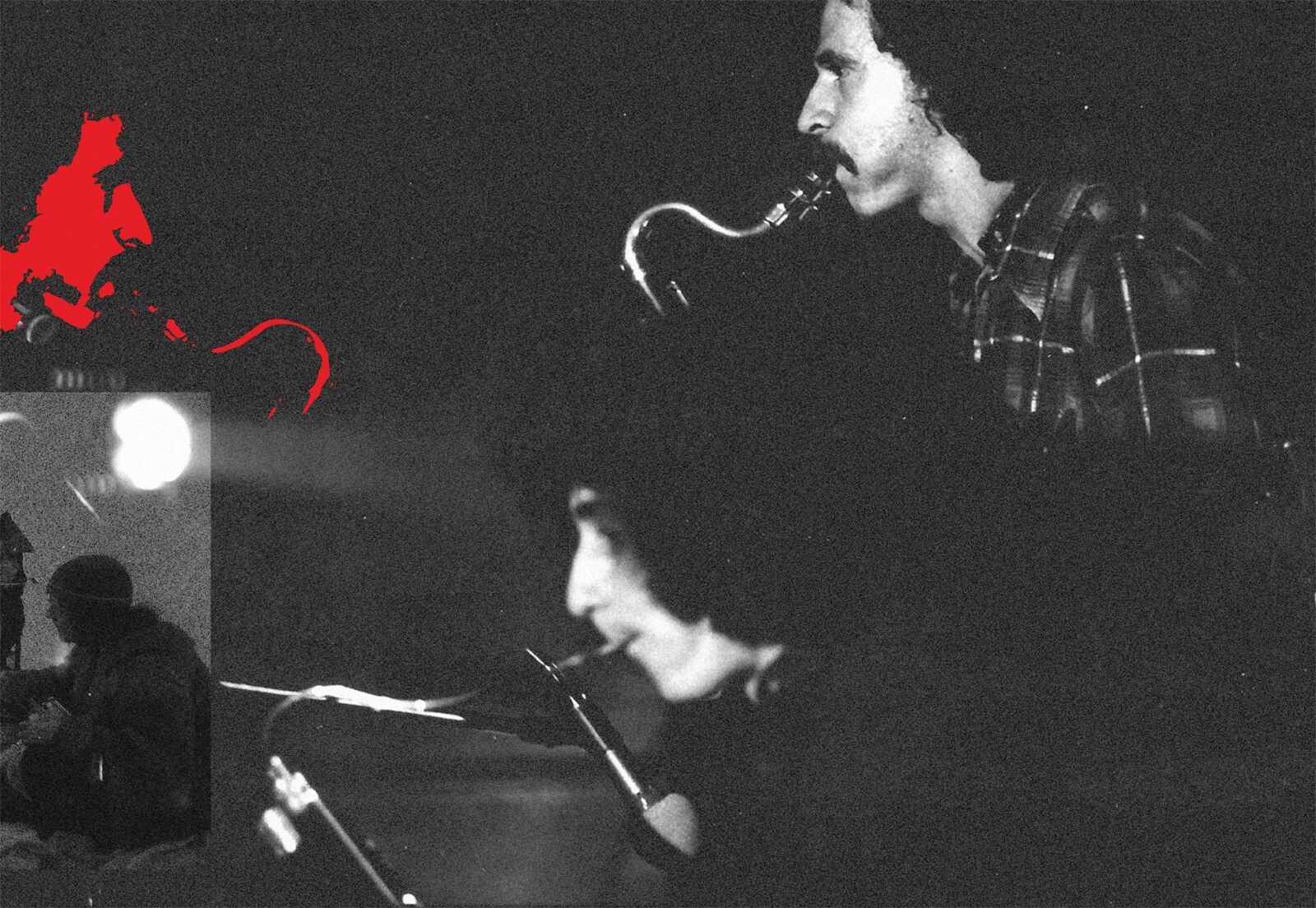
For ‘Un Peu de l’Âme des Bandits,’ I asked Dutch painter Pat Andrea to let us use a reproduction of one of his works, and my friend M.M.C.Octave designed the back cover.
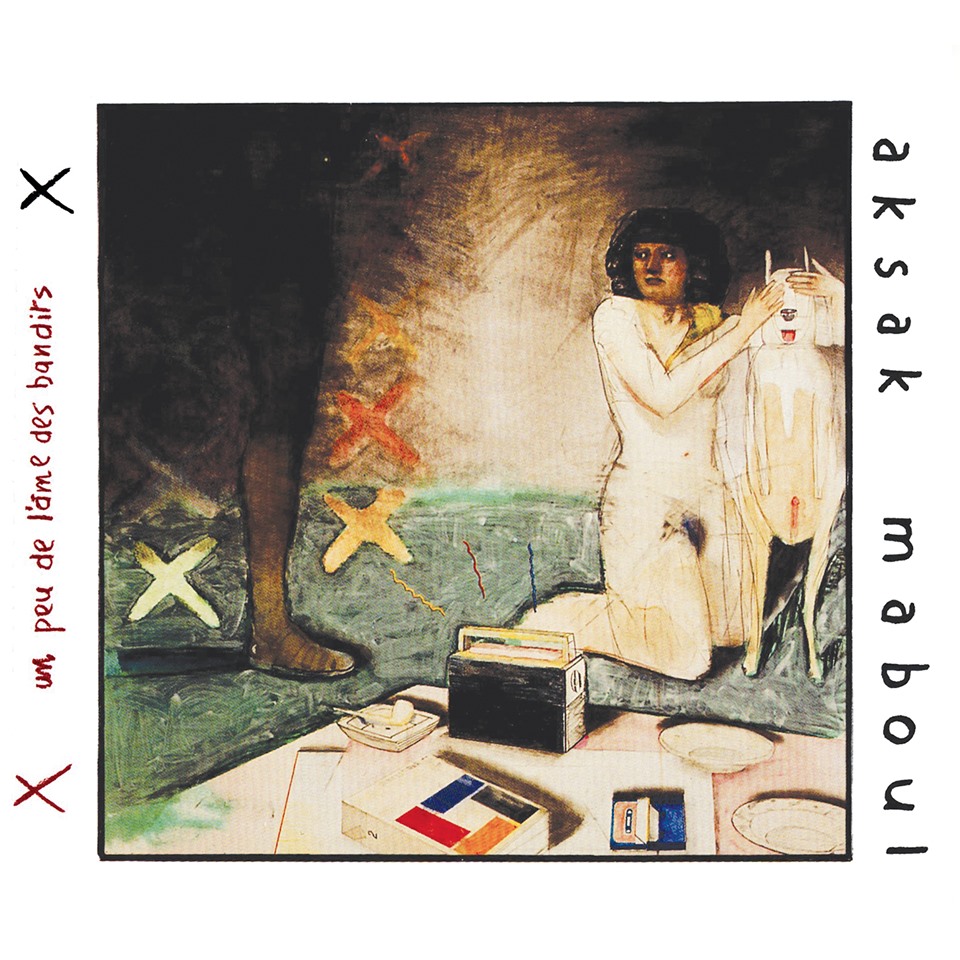
When I reissued ‘Onze danses pour combattre la migraine’ on Crammed, in 1980 (it was part of the fledgling label’s first batch of three releases), I had grown tired of the artwork, and asked another designer friend, Bernard Beauduin, to create a variation. He did this beautiful still life, in which the original cover is positioned on a shelf (we reverted to the original though, when we reissued the album on vinyl back in 2015).
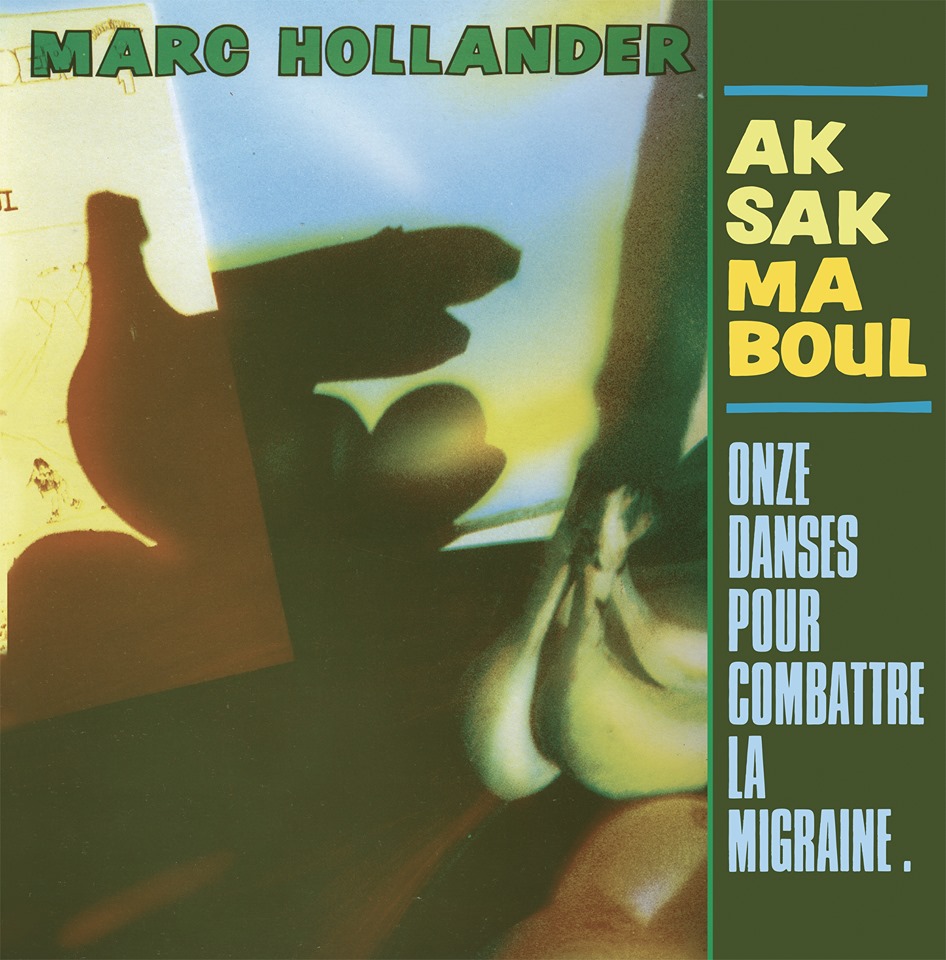
‘Ex-Futur Album’ presented another challenge: the album was assembled from tracks and demos recorded 30 years earlier…It was entrusted to McCloud Zicmuse, a great visual artist (and an amazing, eccentric musician, who released a couple of albums on Crammed, one with the band Hoquets and another –which I warmly recommend- under his Le Ton Mité moniker) who was working as our in-house designer at Crammed. I gave McCloud a collection of pictures and documents from the early 80s, and he created this great, iconic artwork, using super impositions of primary colors…
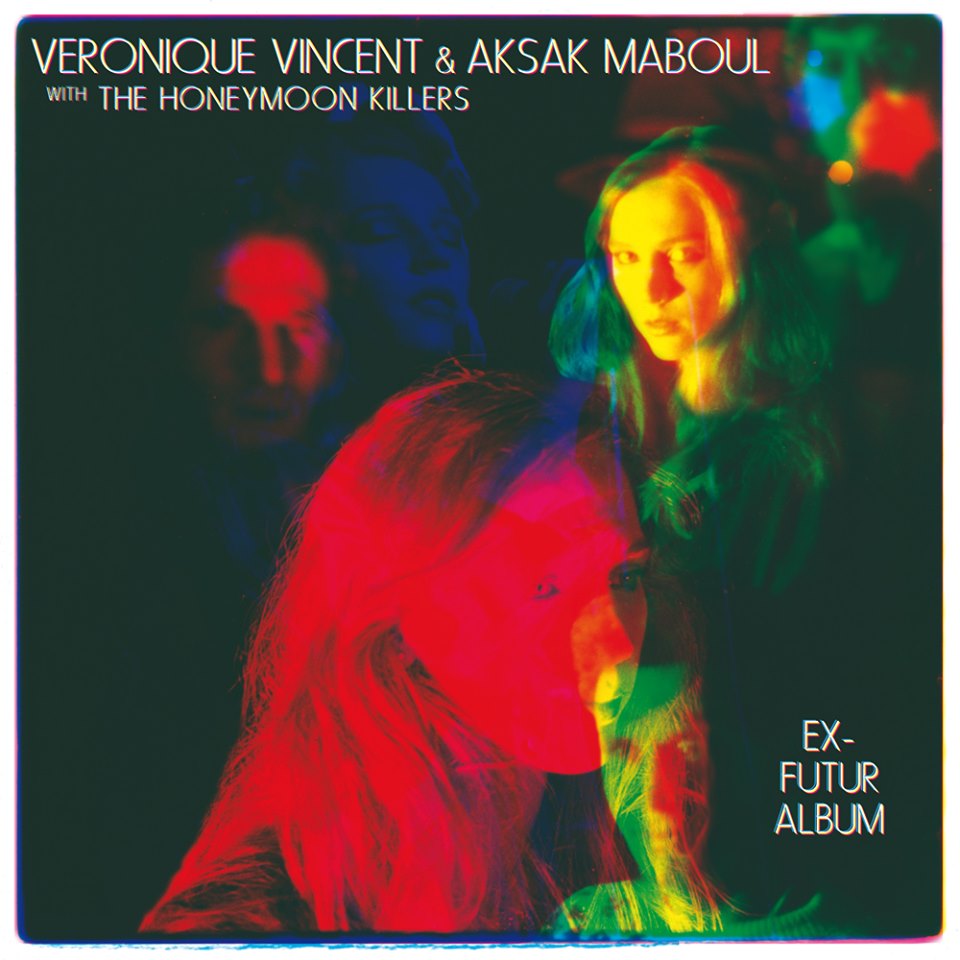
As for ‘Figures,’ it was obvious that the artwork should be based on drawings by Véronique (who has been painting for quite a while now). She very quickly did about 60 drawings for that purpose, including many portraits, and scenes which connect with some of the themes in her lyrics. We then picked around 30, which illustrate the cover and booklet. Some of the drawings are also being used in a series of mini-video trailers (created by Crammed’s current designer Silvia Baldan).
The Honeymoon Killers was your next project formed together with Vincent Kenis and the core of a Brussels band Les Tueurs de la Lune de Miel. How would you compare it to Aksak Maboul?
That’s not exactly it. What is now known as phase 3 of Aksak Maboul started right after the release of ‘Un Peu de l’Âme des Bandits’. After working with complicated music played by virtuoso musicians, I felt like making a radical change, and going for a minimal sound. There was this band in Brussels called Les Tueurs de la lune de miel, they were wild, provocative, oscillating between quasi punk rock and free jazz, with a definite Beefheartian edge. I asked three members of the band to join me for a new incarnation of Aksak Maboul. The idea of having a rough rhythm section with complex superstructures on top was appealing.
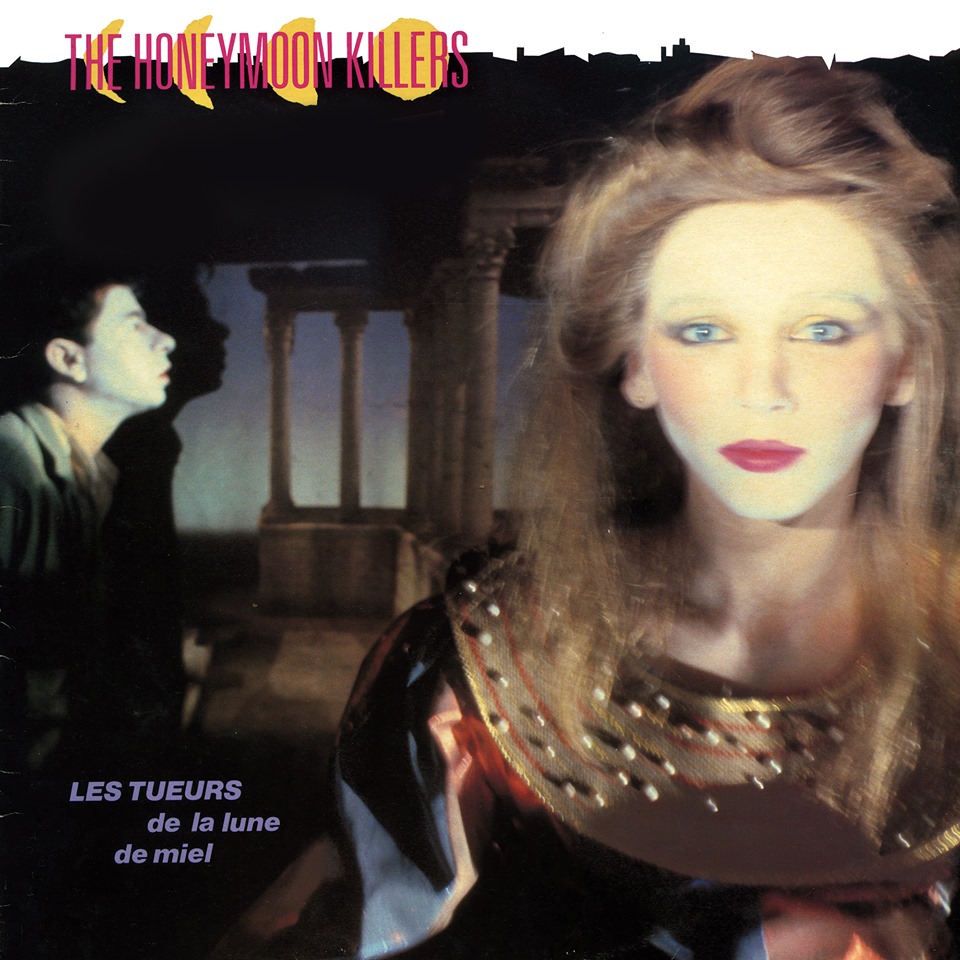
So Tueurs members Yvon Vromman, Gerald Fenerberg and Jean-François Jones Jacob III joined Michel Berckmans and me, and we played an initial concert in April 1980, at what was practically a RIO festival in Reims (FR), Musiques de Traverses, with Catherine Jauniaux, Hector Zazou and Chris Cutler sitting in for a shambolic version of ‘A Modern Lesson’…It was fun to surprise the audience of that particular festival, who were expecting something more along the lines of ‘Un Peu de l’Âme des Bandits,’ and got this “thing” instead…
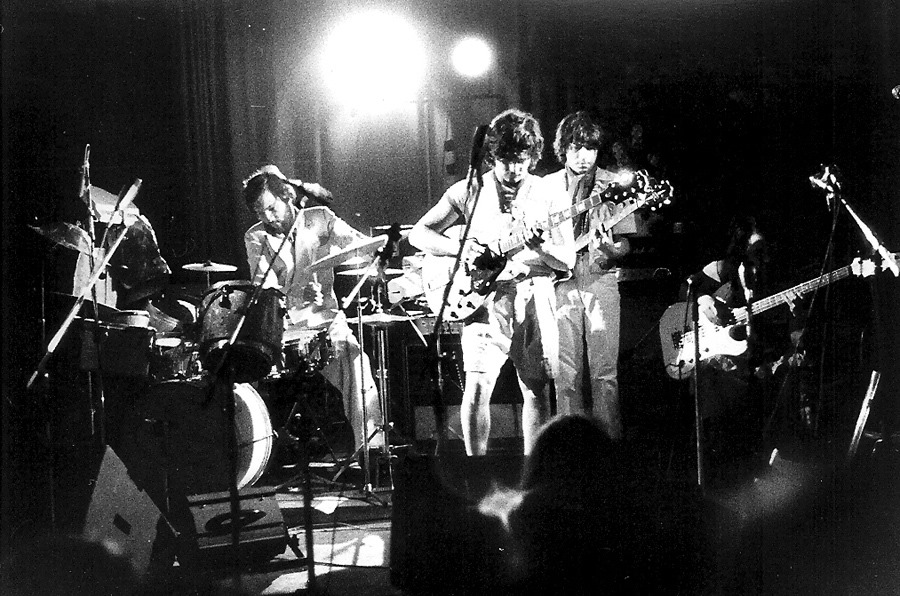
At that point, chief Tueur Yvon asked me to join the new line of their band, and he also invited vocalist Véronique Vincent to join, as well as Vincent Kenis. So we basically hired each other…and this 6-piece line-up became a kind of two-headed monster: we aimed at recording two albums, and started writing and rehearsing material. We mostly performed as Aksak Maboul for a year, mostly around Belgium, France and Germany. One of the last concerts took place at Le Disque Rouge in Brussels (a ballroom which later became renowned electronic music club The Fuse): we set up a show and invited This Heat to share the bill with us, that was in March 81. Though Véronique and I had started working on music for the new Aksak album (i.e. what would end up being the ‘Ex-Futur Album’), the material for the Tueurs album was ready sooner, and we started recording it at Sunrise studio, in April 1981. We continued in Brussels and London (with some help from our London friends from Family Fodder & People in Control: Alig, Martin Frederix, Mick Hobbs et cetera). Renamed ‘The Honeymoon Killers’, the band took off immediately, right from the release of the first single. Constant touring, performances for radio and TV et cetera. went on until the end of 1984 (with some final shows in Japan), and didn’t leave much space for the next Aksak album. In early 1985, Yvon wanted to regain sole leadership over what was essentially his band, and working on the new Aksak songs with the three Tueurs didn’t seem like the right way to go: we had probably reached the outer limits of creative tension inside the band, so we “unmerged.”
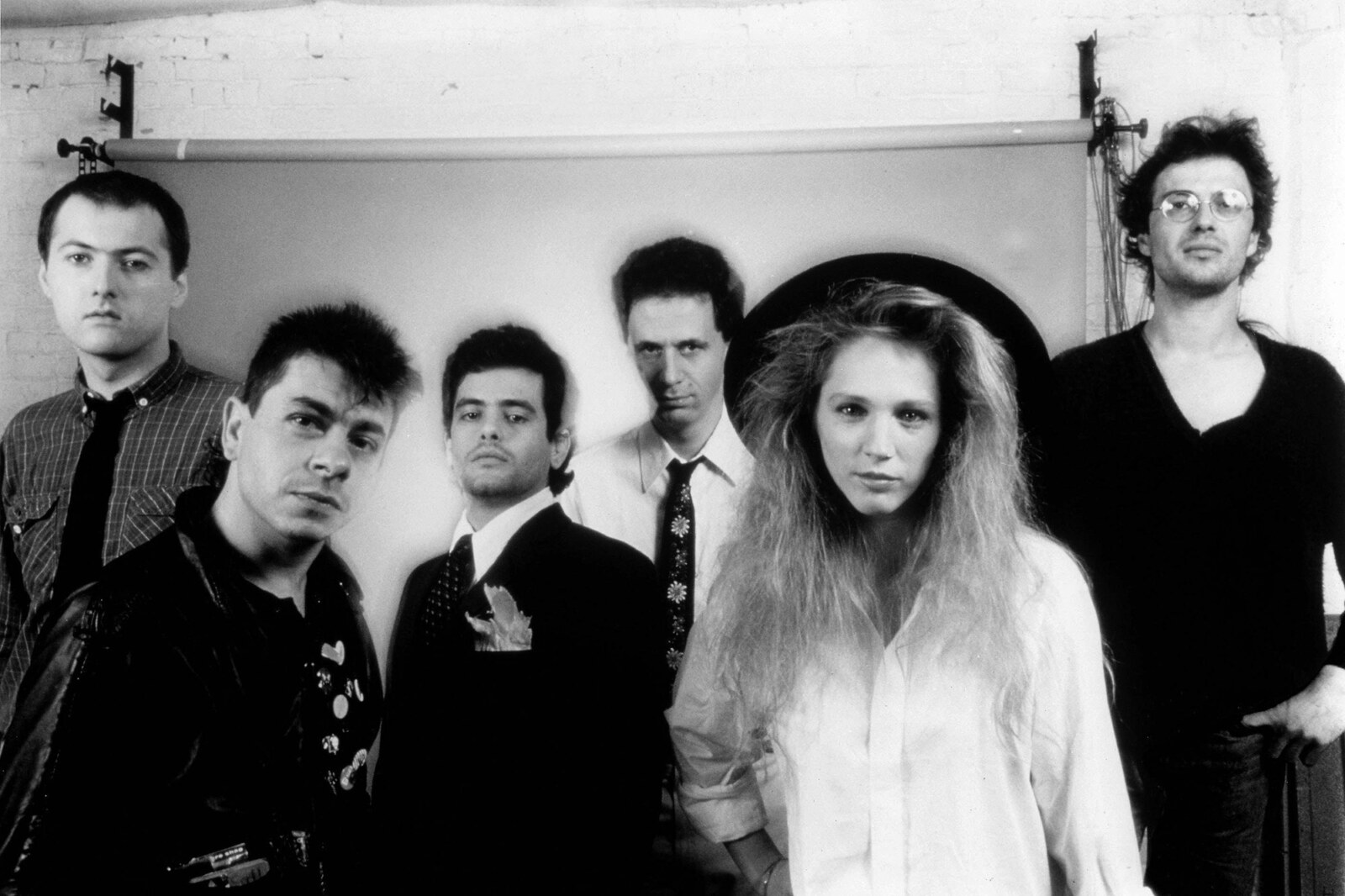
Crammed Discs is still going very strong. What are some of the latest releases our readers should get into? You’re covering a wide variety of releases. How do you select your artists?
The label started out as a kind of extension of Aksak Maboul, so the philosophy was similar. The label’s original motto was “Fun & Cosmopolitanism”…Thus: playfulness, meeting artists from everywhere, not paying too much attention to stylistic or geographical borders, but only following our intuition and taste. Which led us to be working with many cross-genre and cross-cultural artists, and to be active in (and in between) the areas of rock, electronica, world music, pop et cetera. There’s no definite rule for selecting artists we want to work with, it’s a combination of several factors: gut feeling, affinity with their work, enthusiasm for their music, belief that we can achieve something with them and bring them something…and chance encounters also play a big part: we never set out to actively look for artists operating in a specific field, we just happen to meet them…
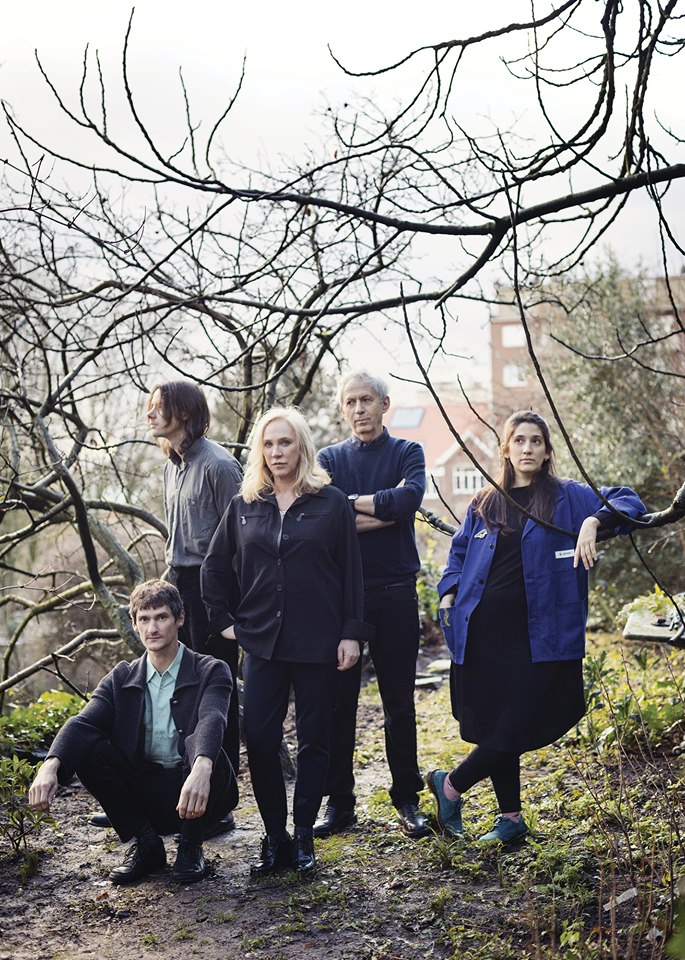
Among our latest releases, I’d recommend Doctor Fluorescent, aka Californian musicians Scott Gilmore & Eddie Ruscha, who play cinematic music, using old synthesizers (lovely album, at once experimental, dreamy and melodic); Ekiti Sound, aka producer/vocalist Leke Awoyinka, whose music has one foot on Lagos and one in London; French-Chilean duet Nova Materia (who incorporate sounds generated by metal and minerals in their blend of electronic music and post-punk); fascinating experimental crooner Don The Tiger; English musician Stubbleman (aka renowned produced Pascal Gabriel), who has built an orchestra of automatons to accompany him onstage when he performs his beautiful ‘Mountains and Plains’ album (Aksak Maboul have just done a remix of one of his tracks); and of course the latest releases by Juana Molina, Matias Aguayo and Acid Arab.
Klemen Breznikar
Headline photo: Samuel Kirszenbaum
Aksak Maboul Facebook / Instagram / Twitter / Bandcamp
Crammed Discs Official Website / Facebook / Instagram / Twitter / Bandcamp

